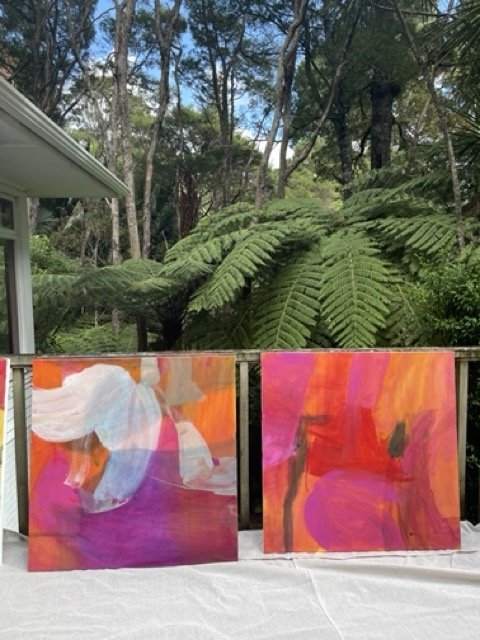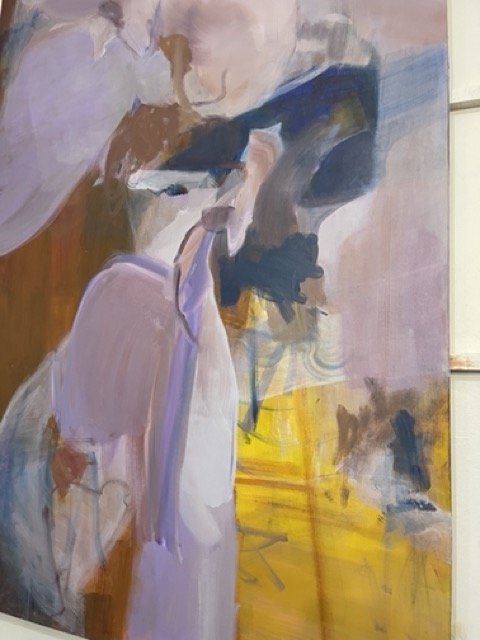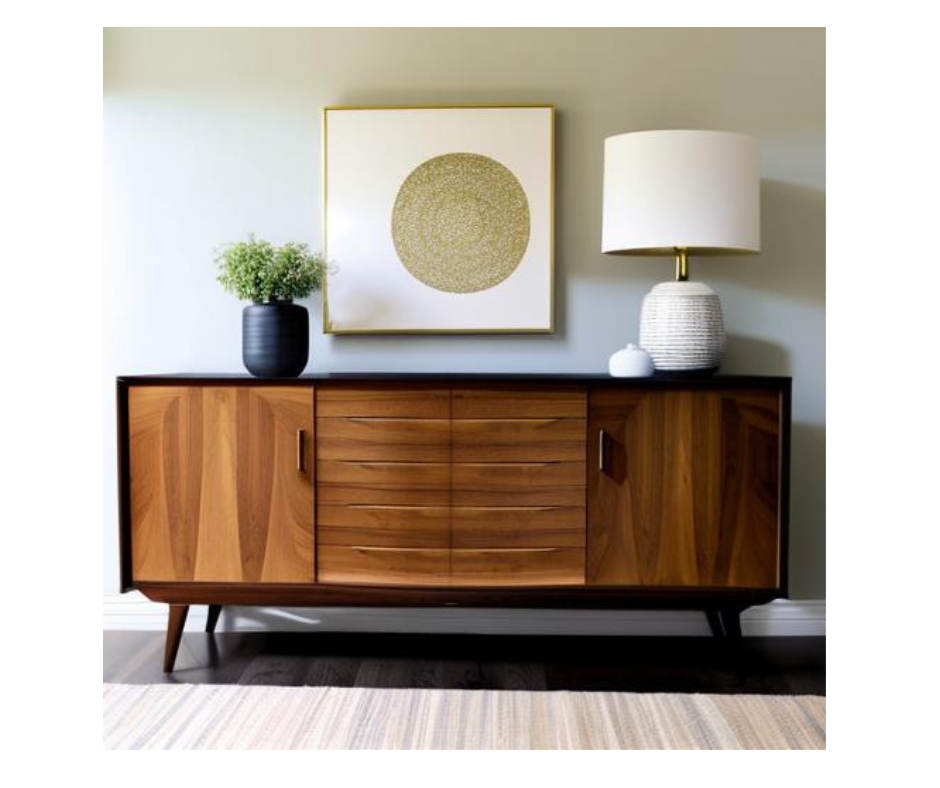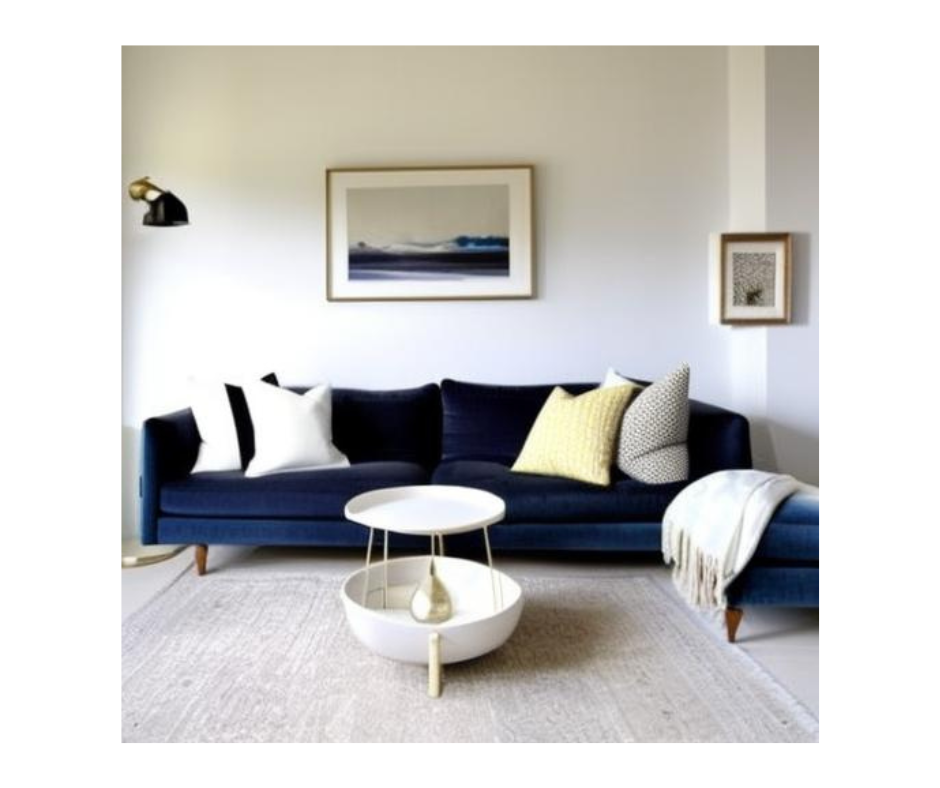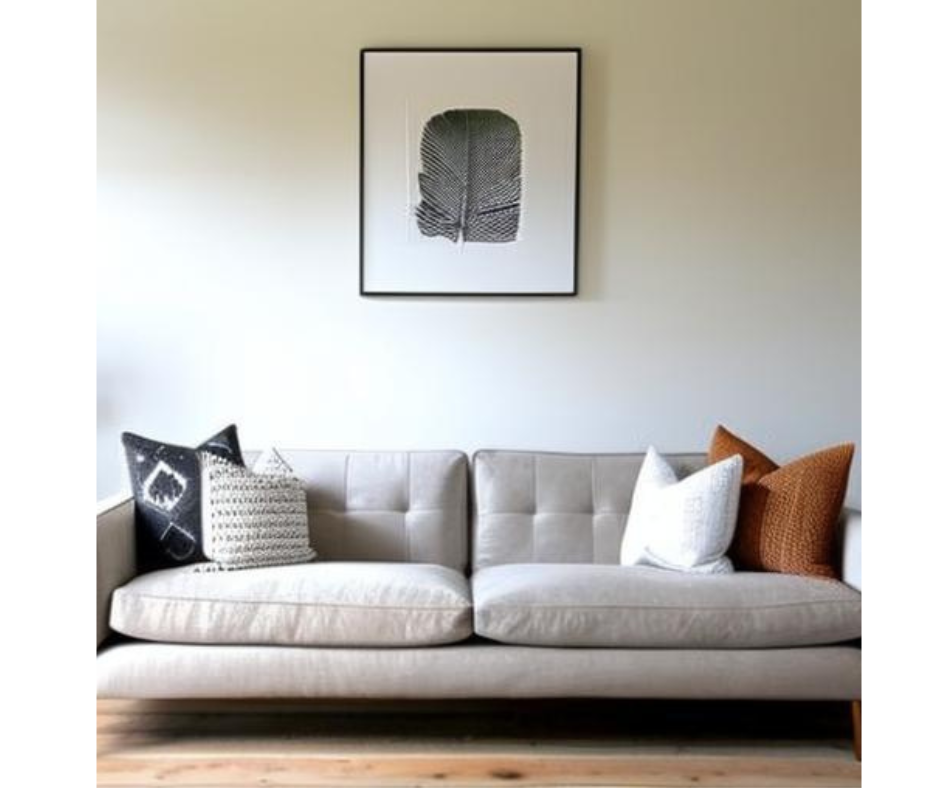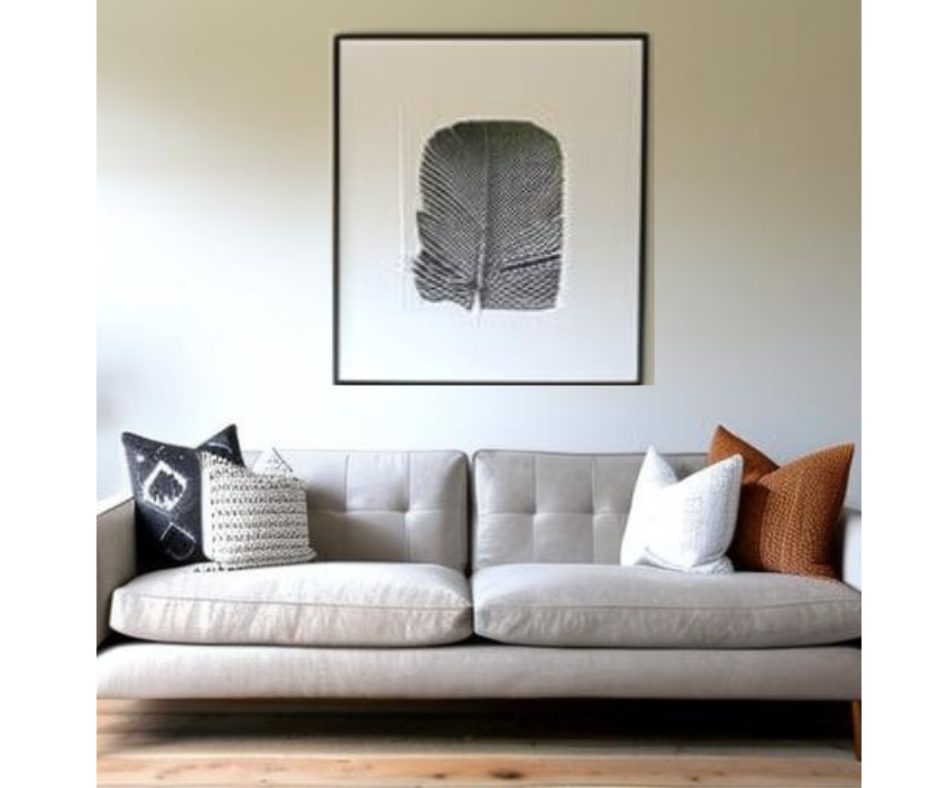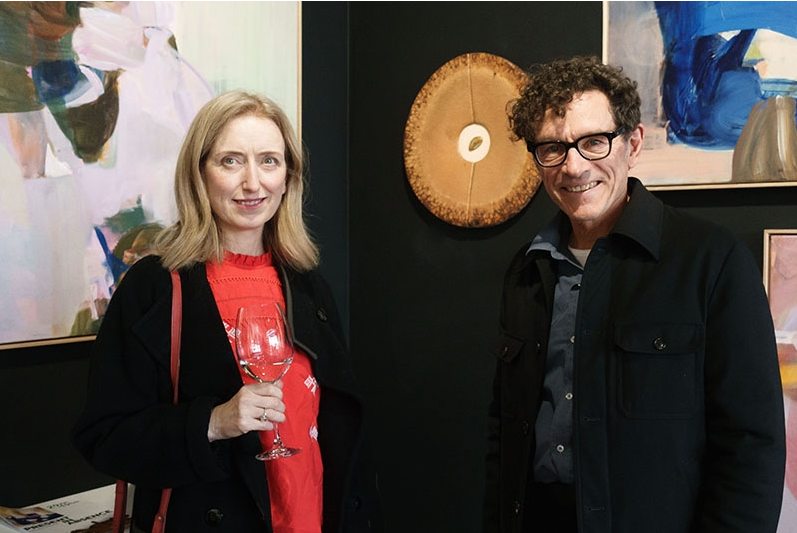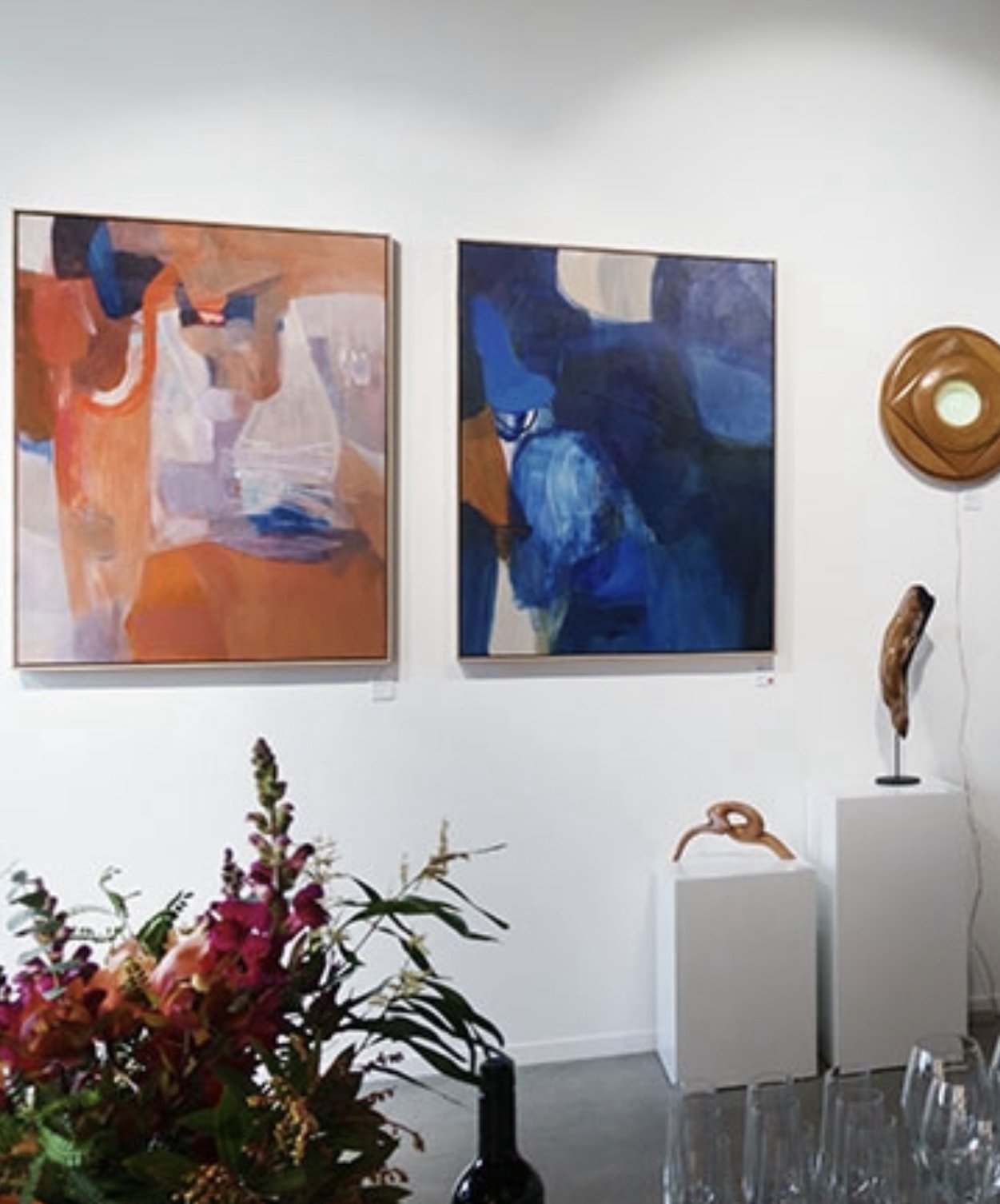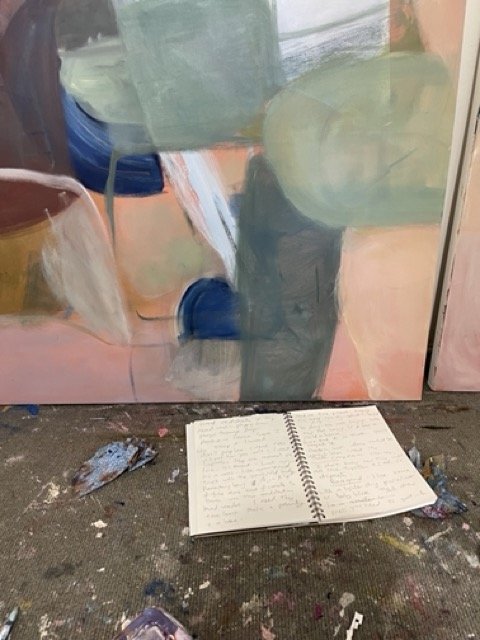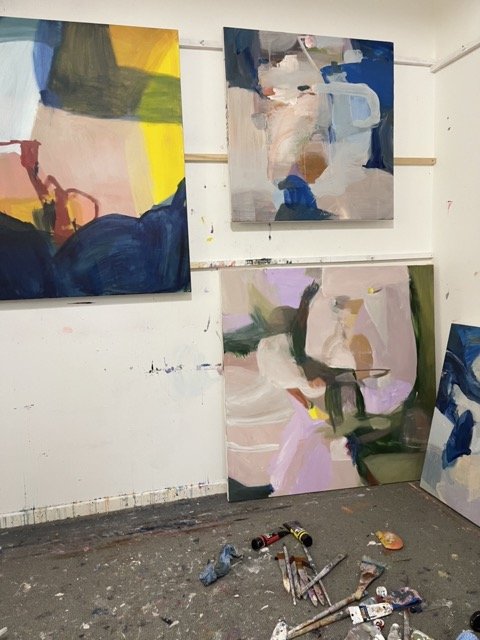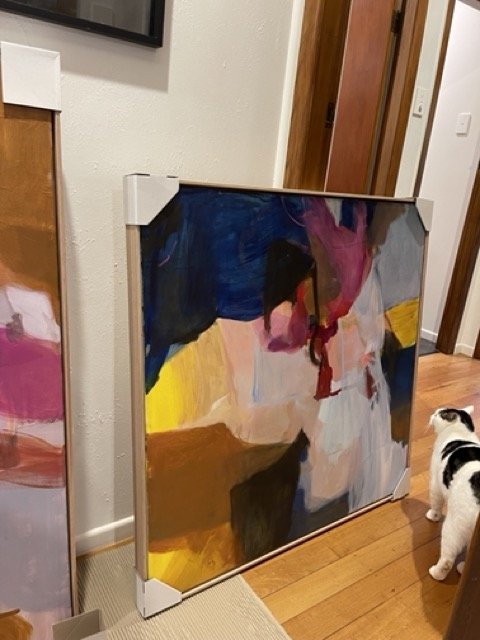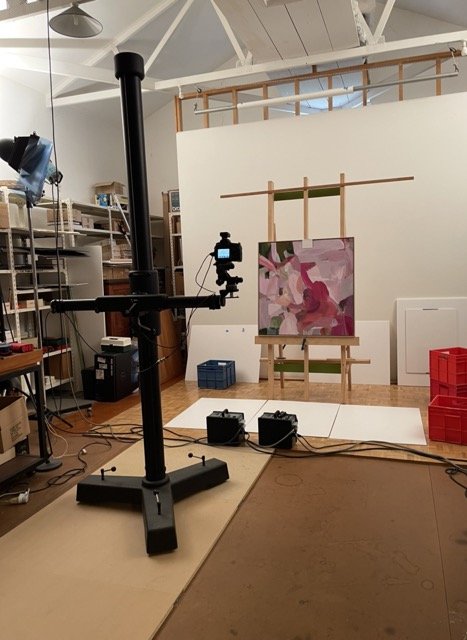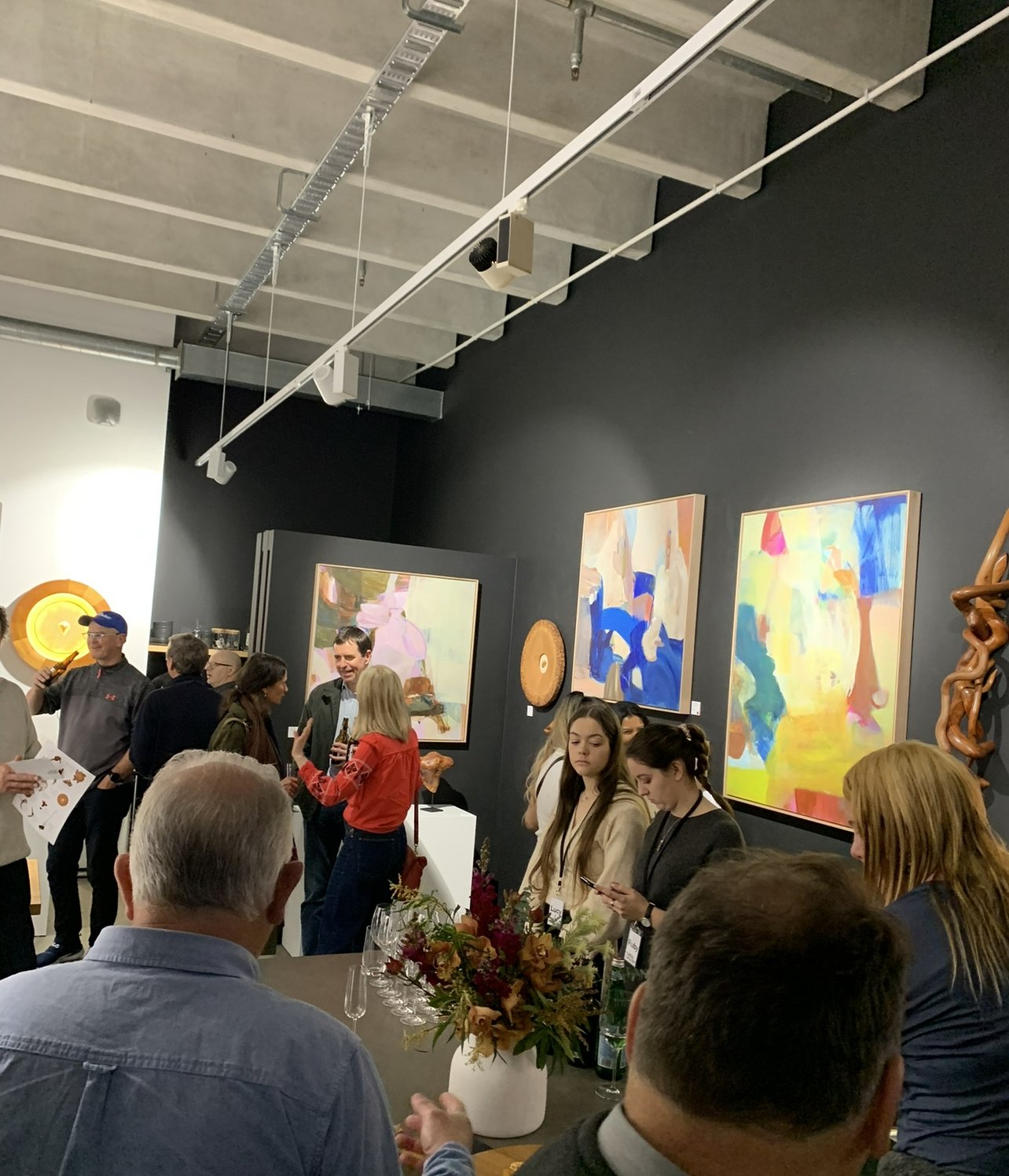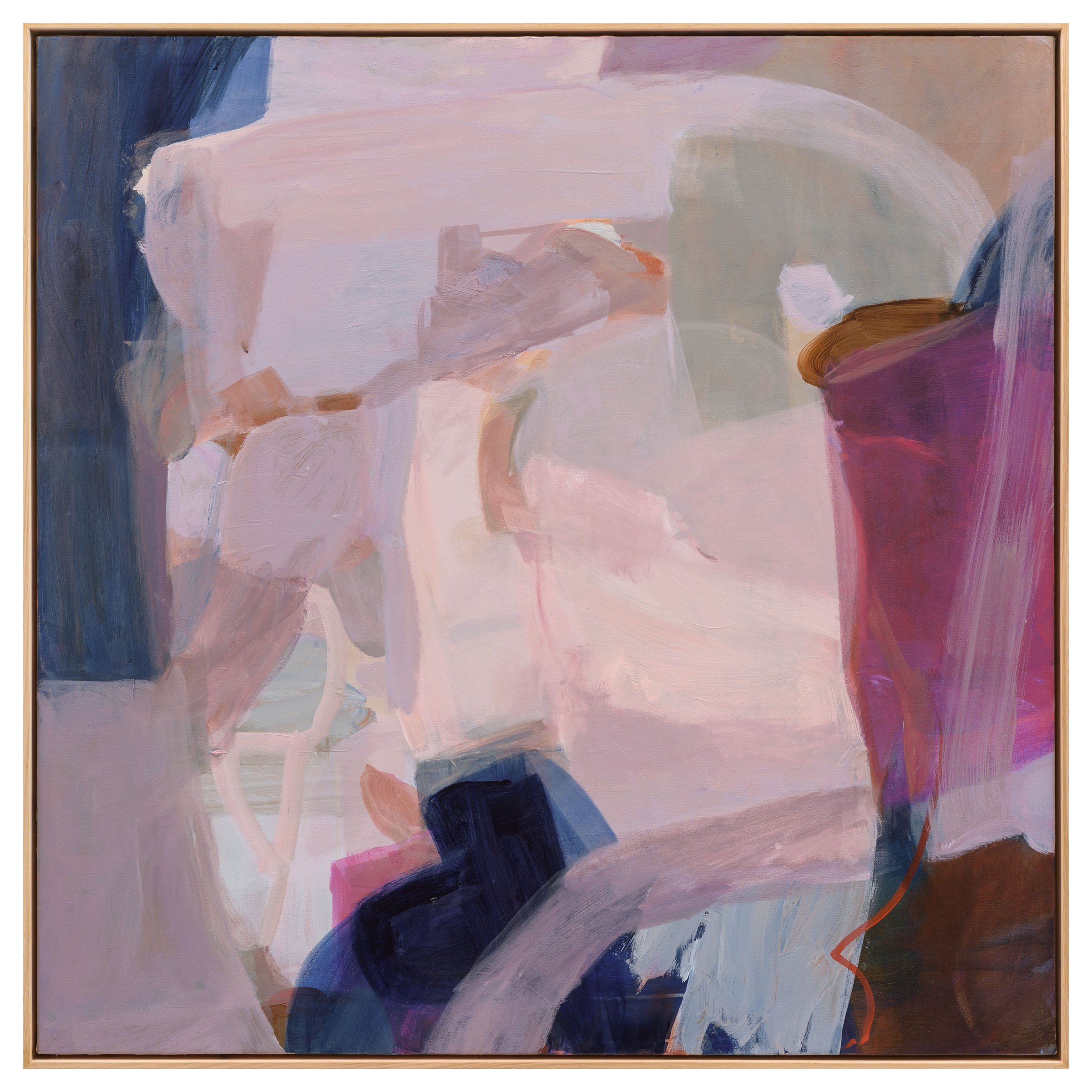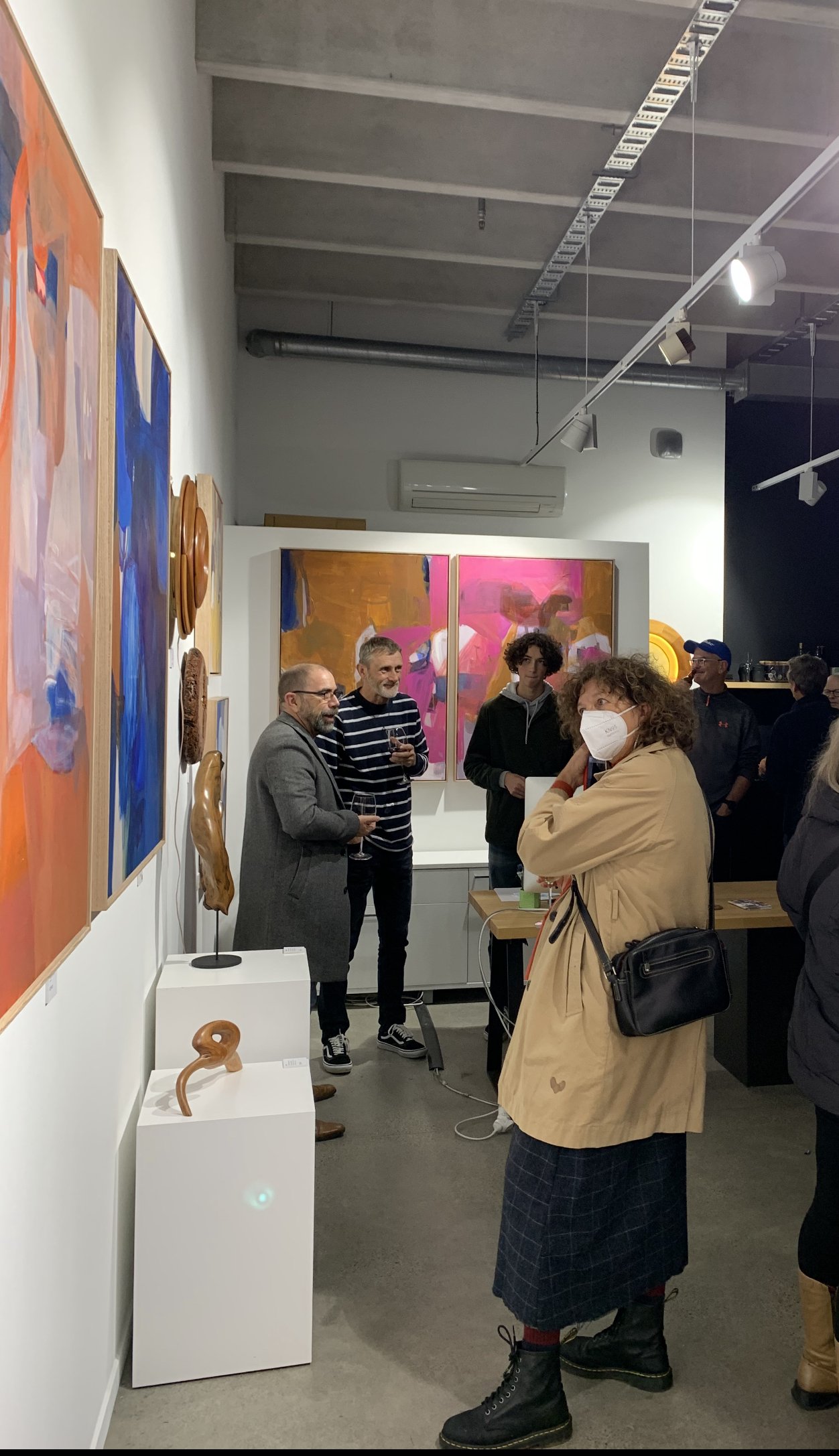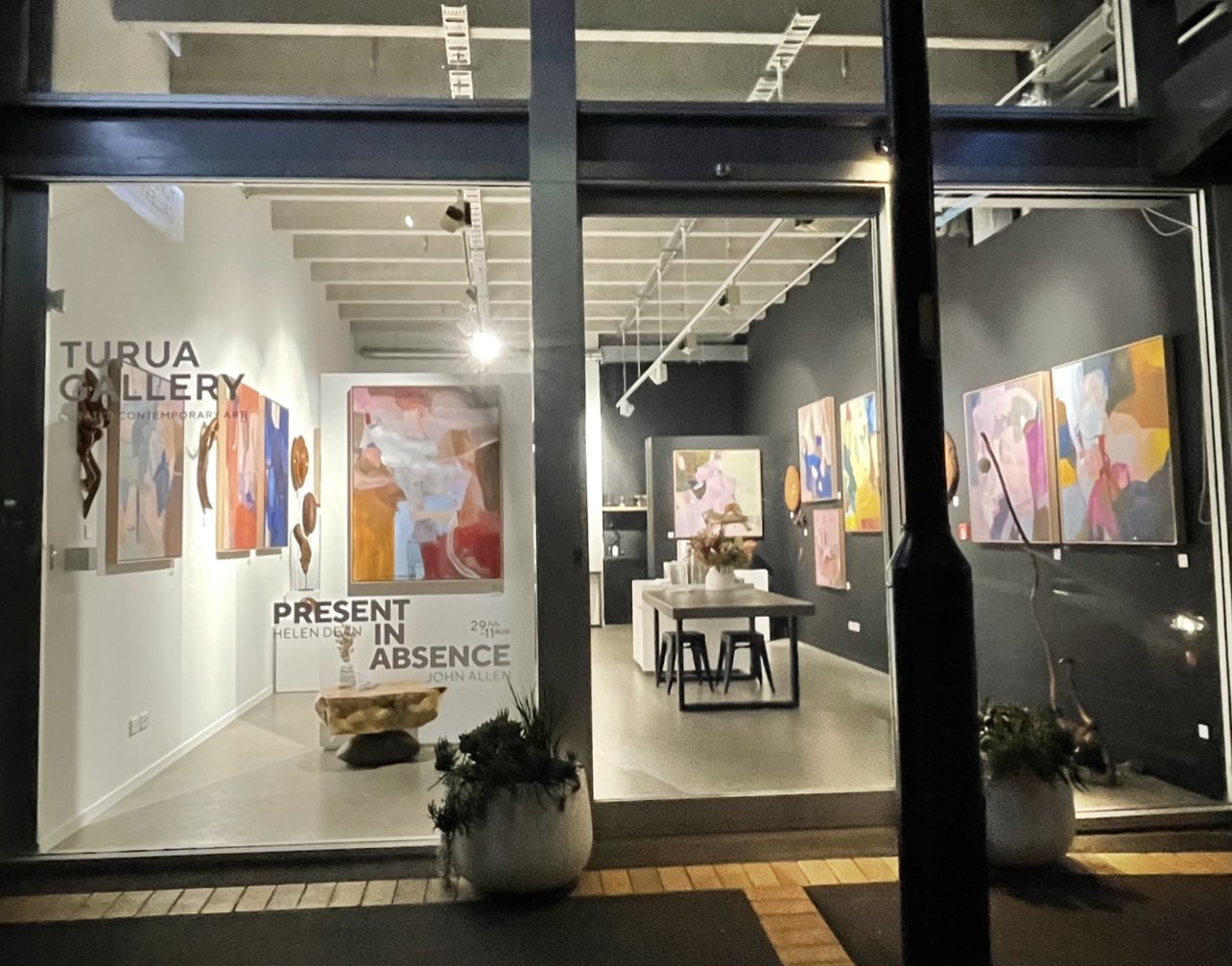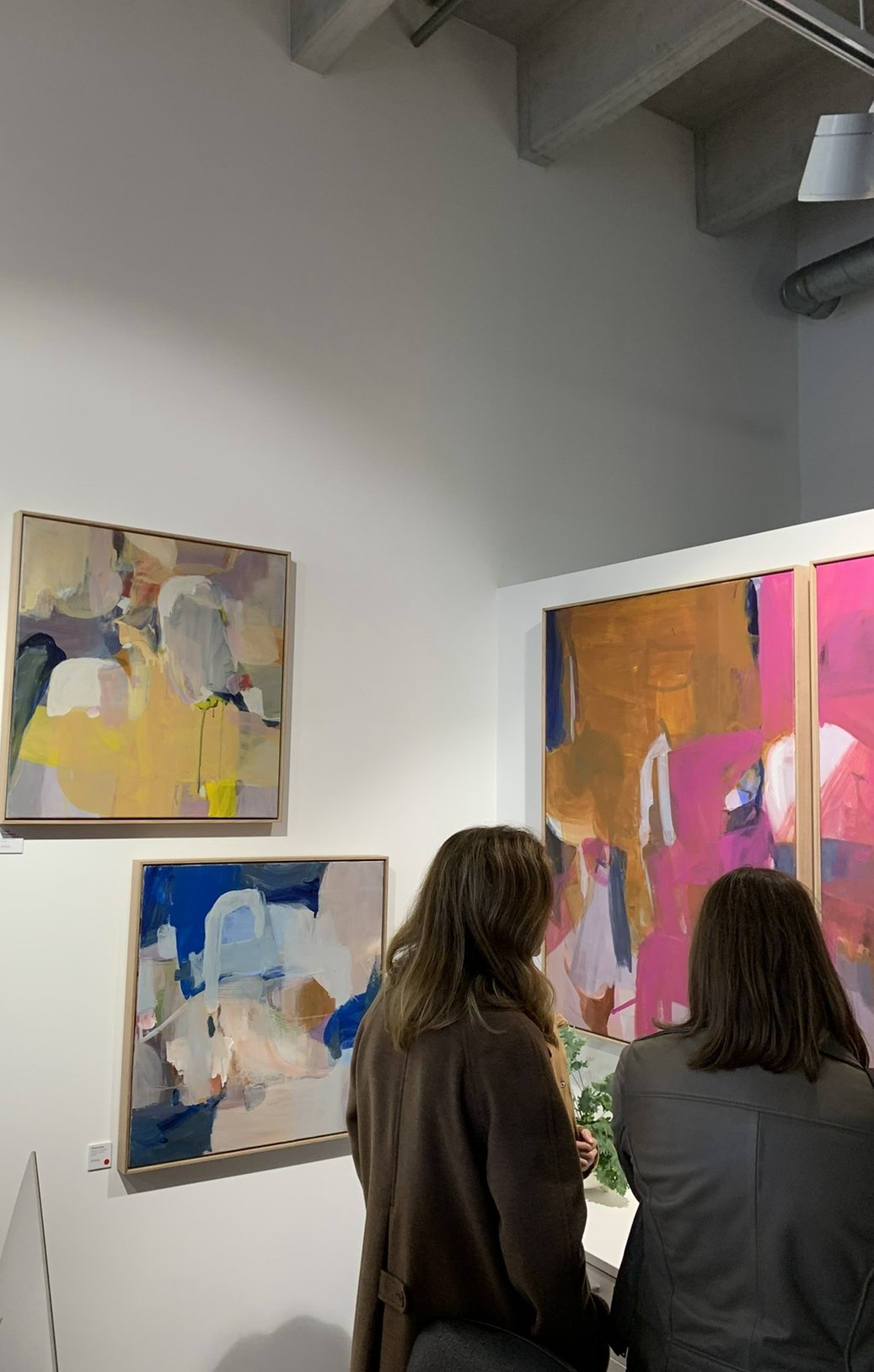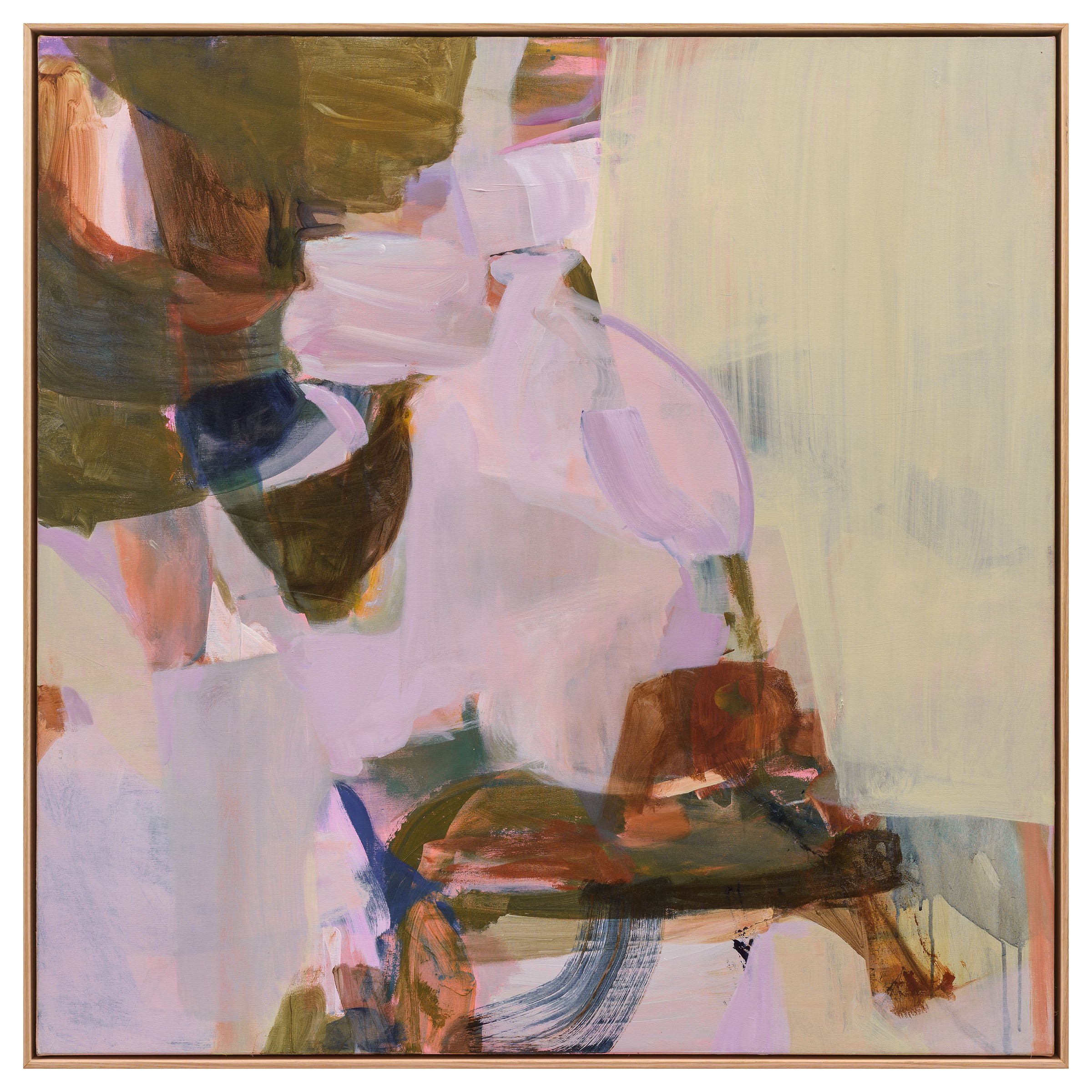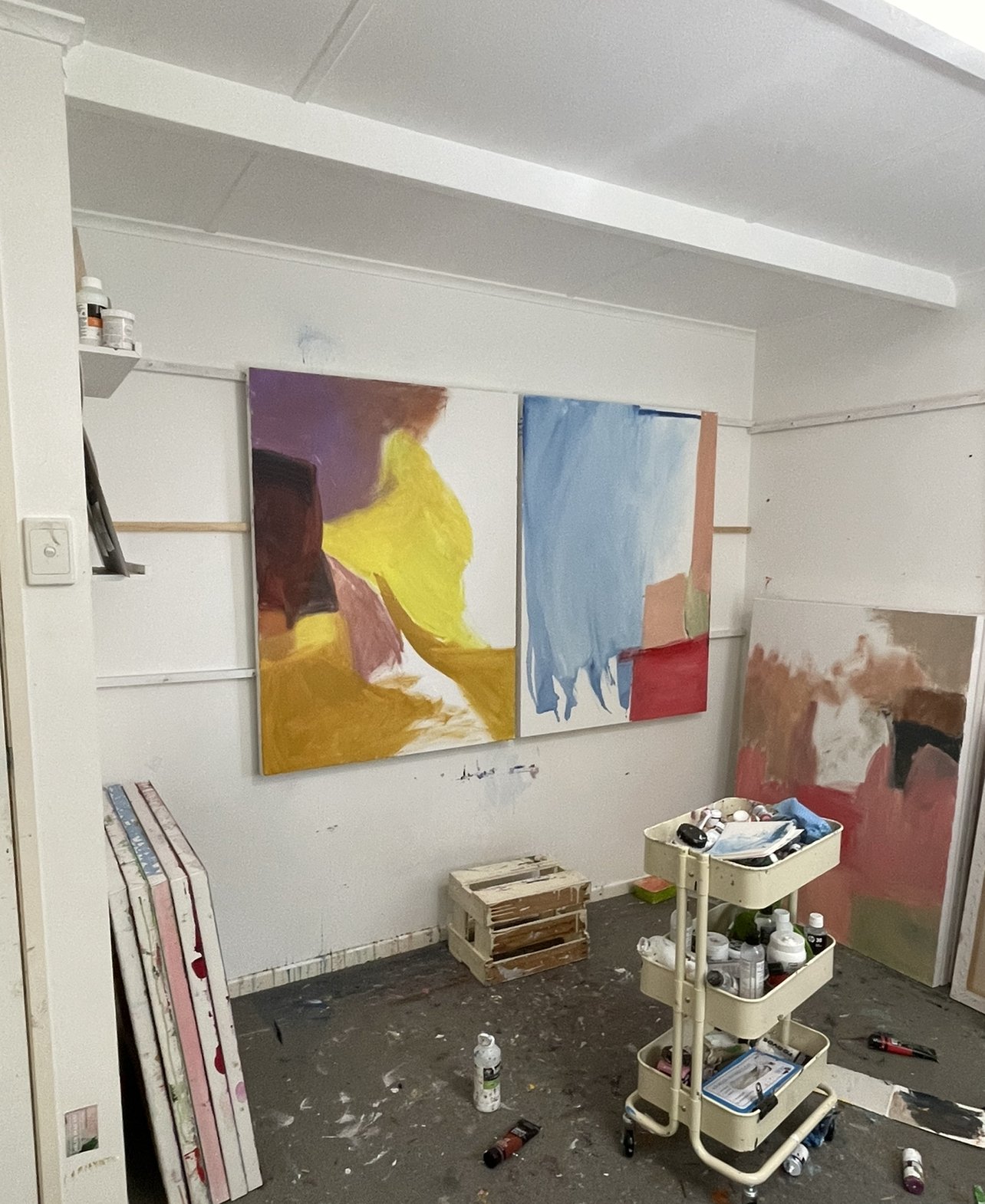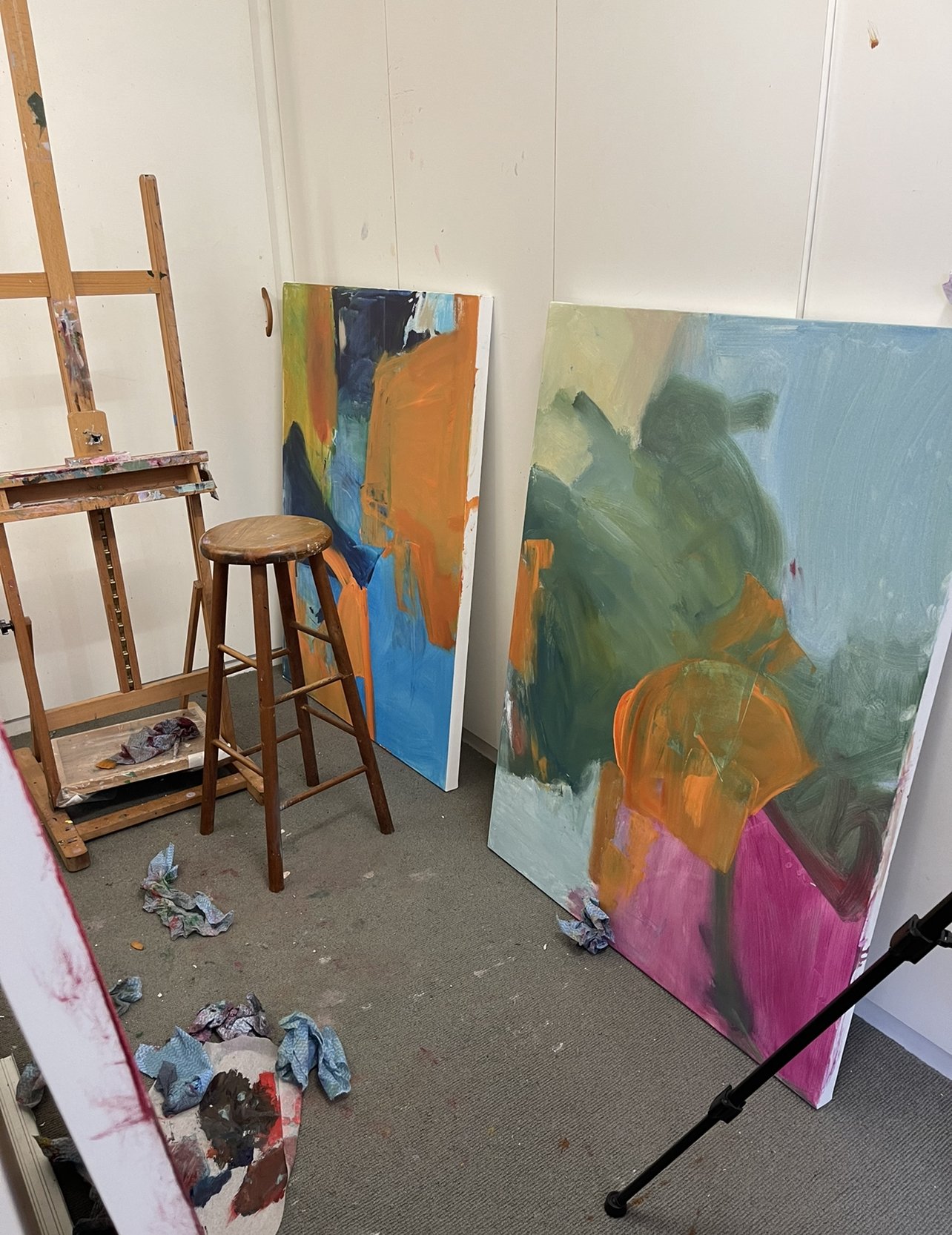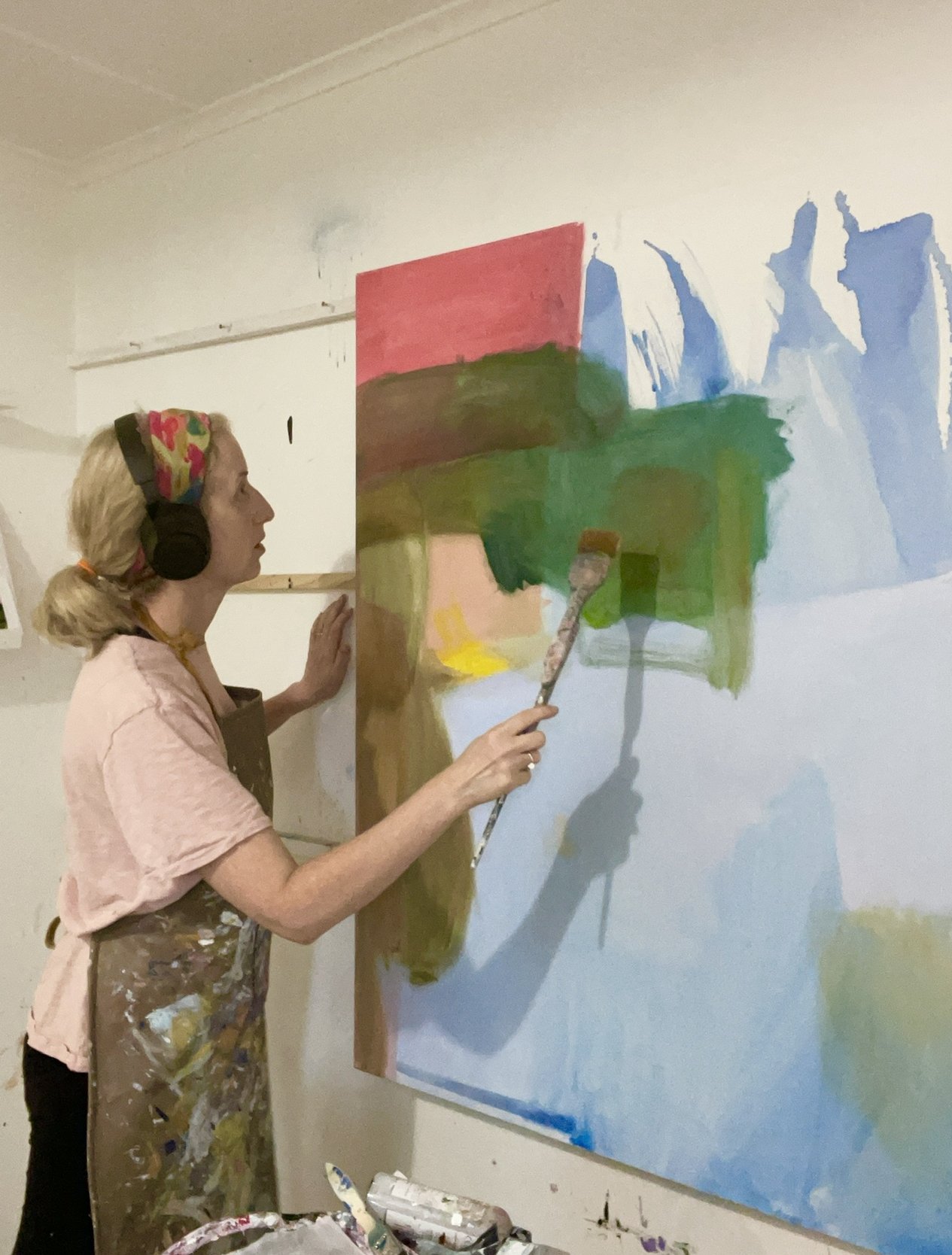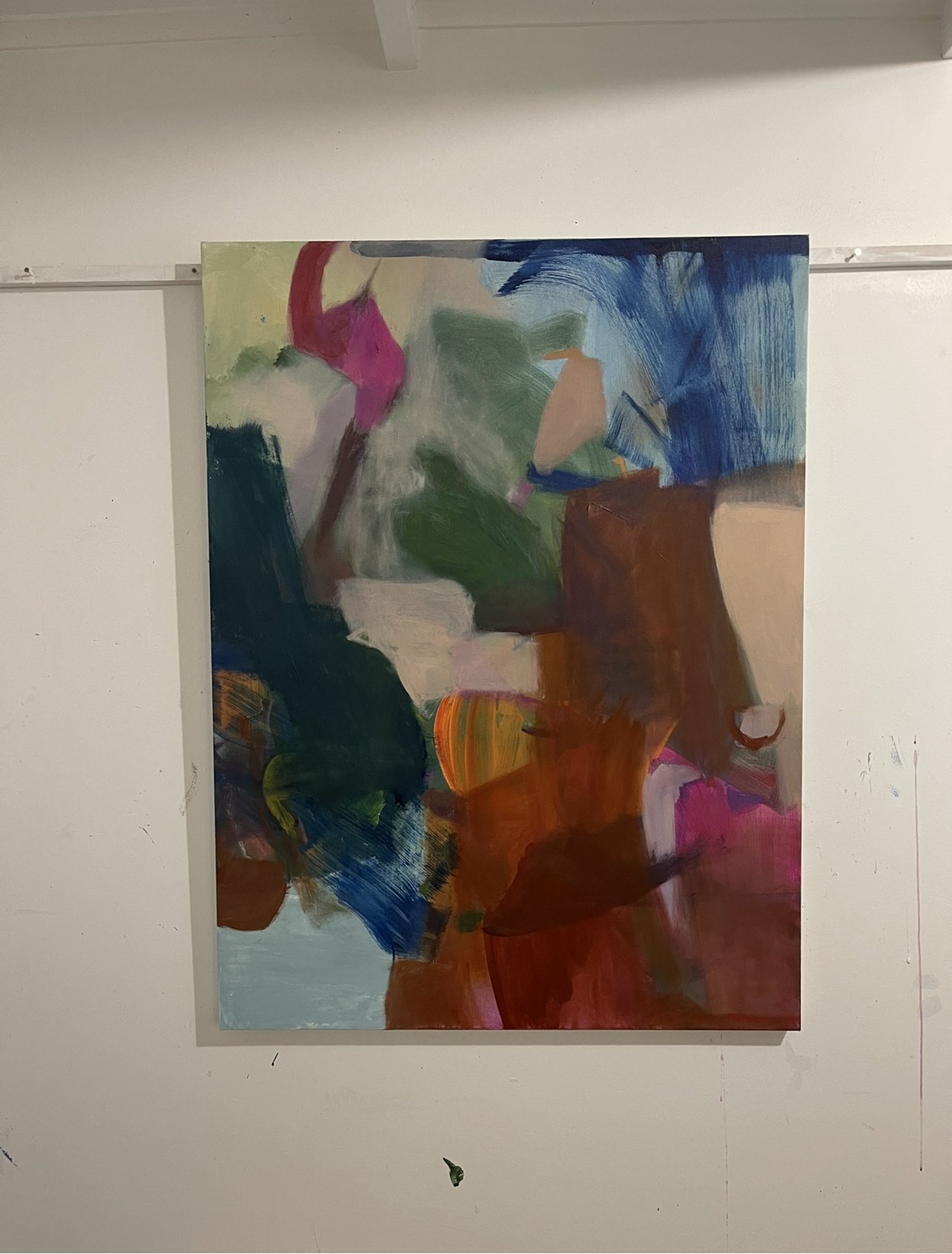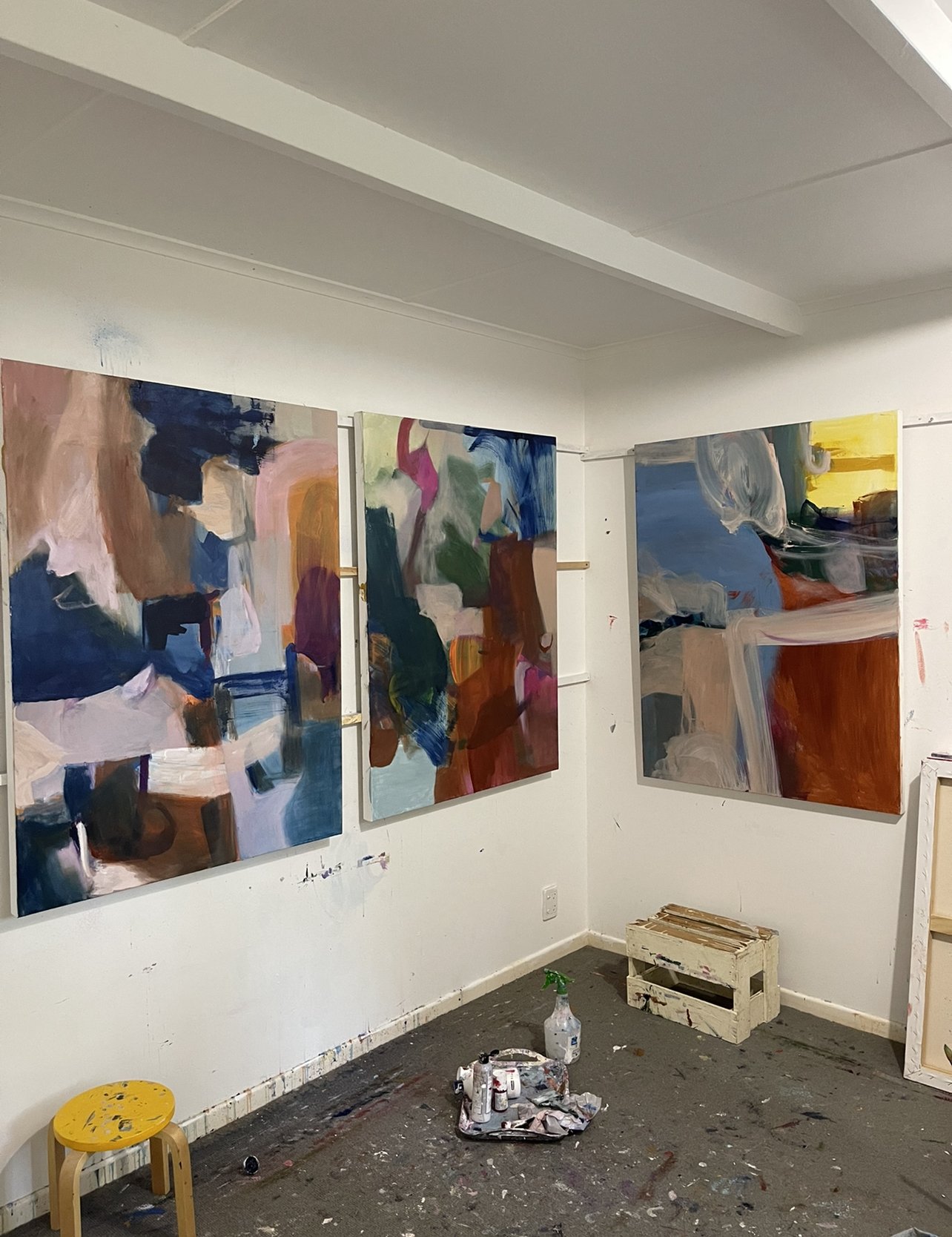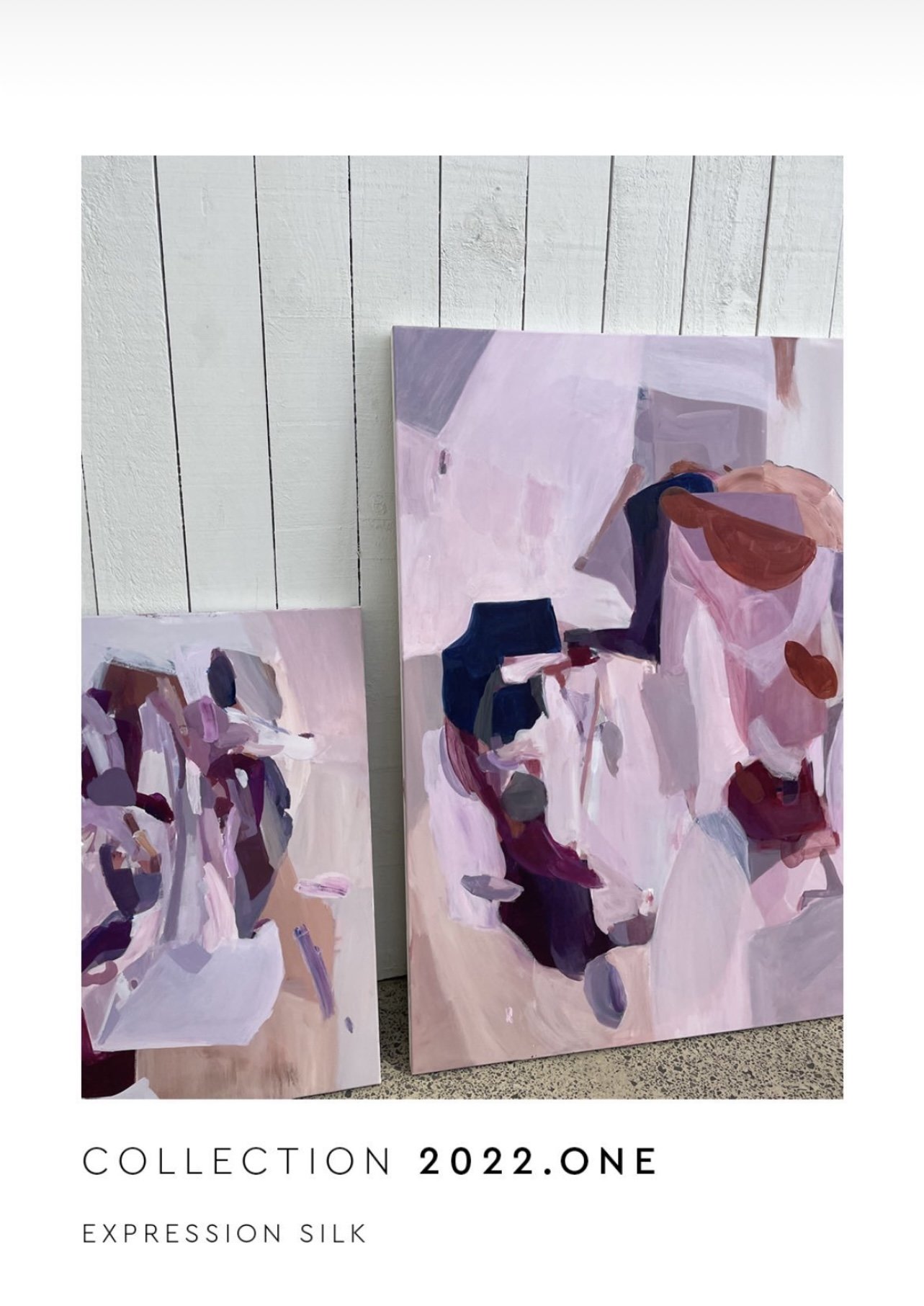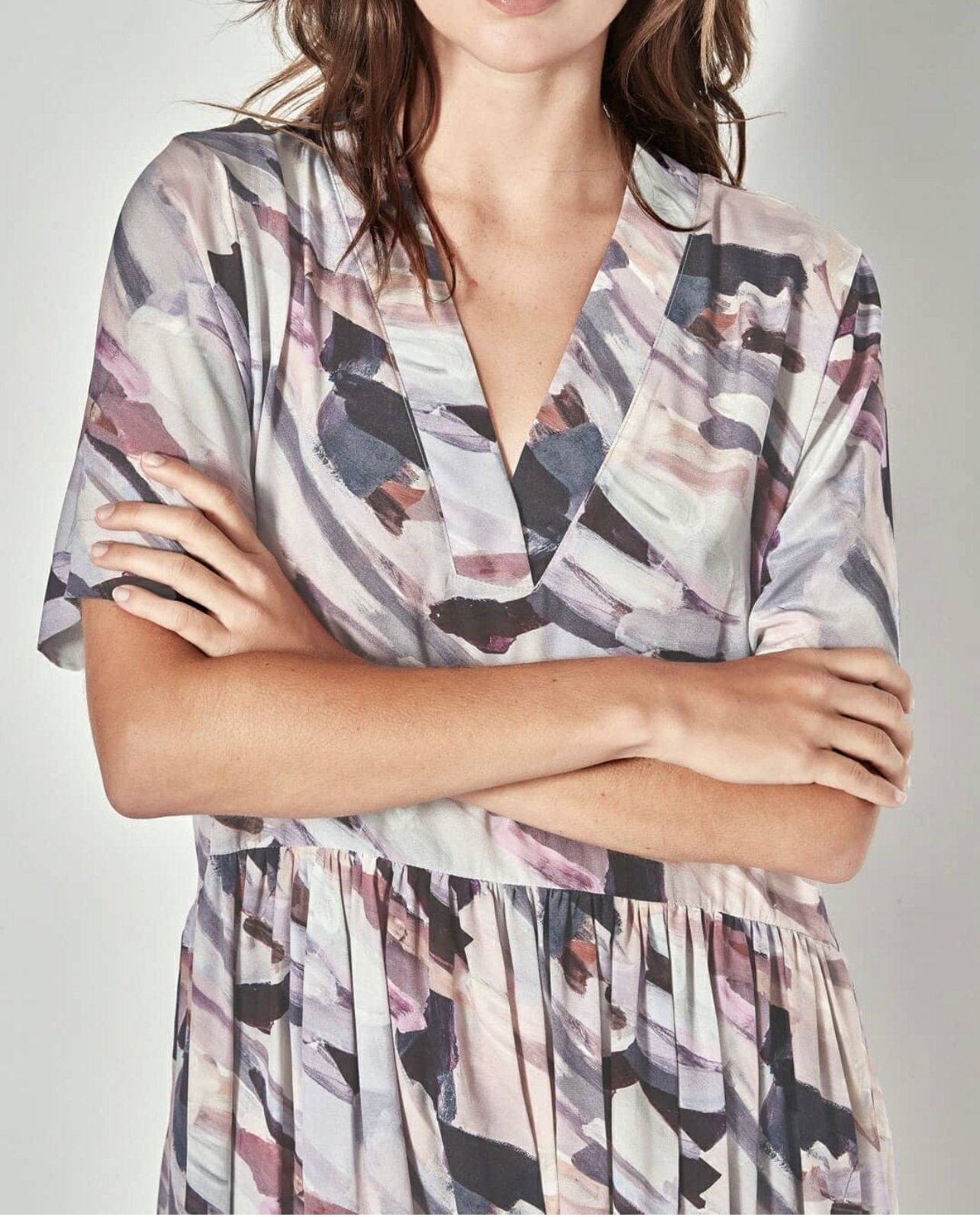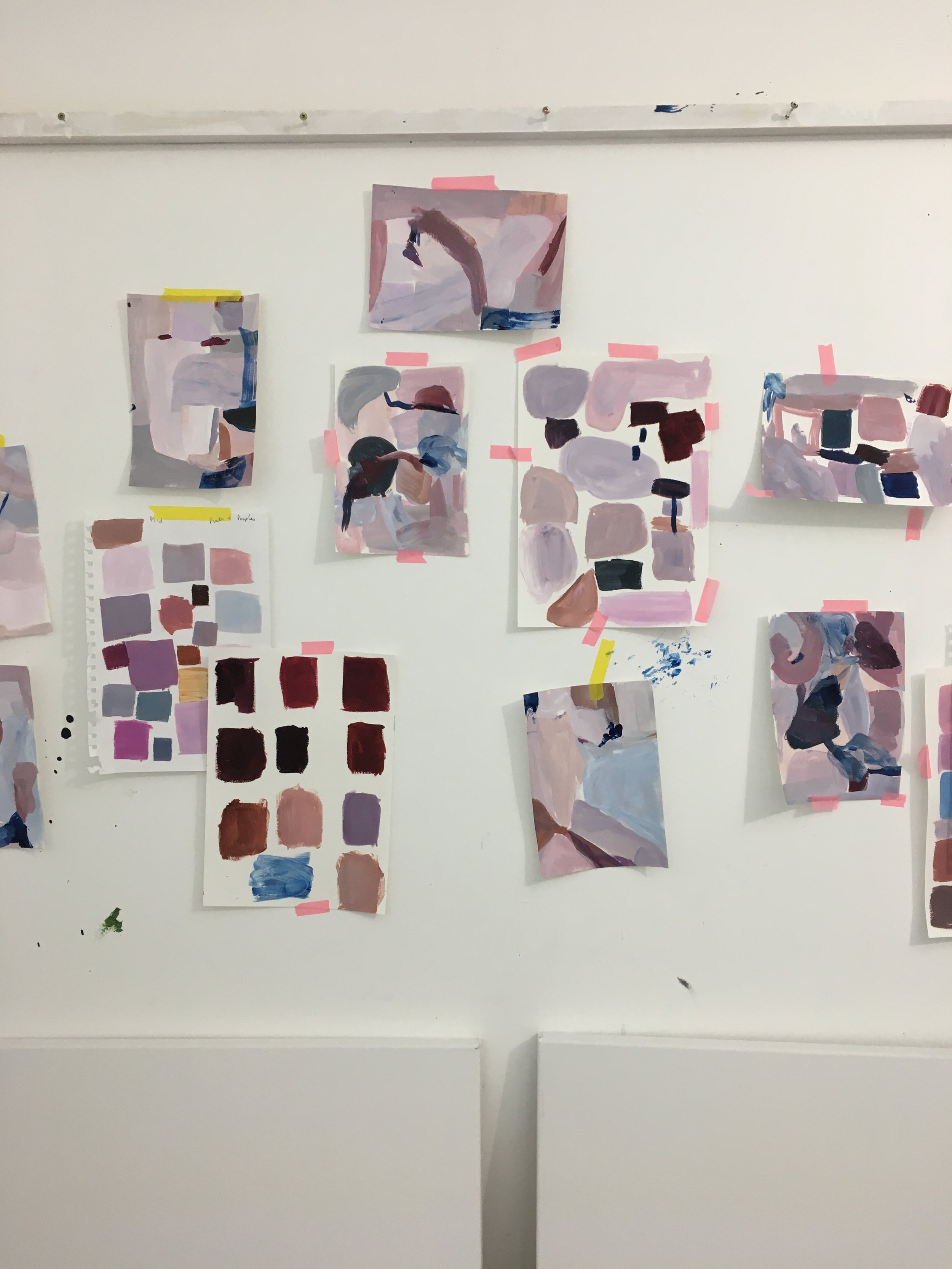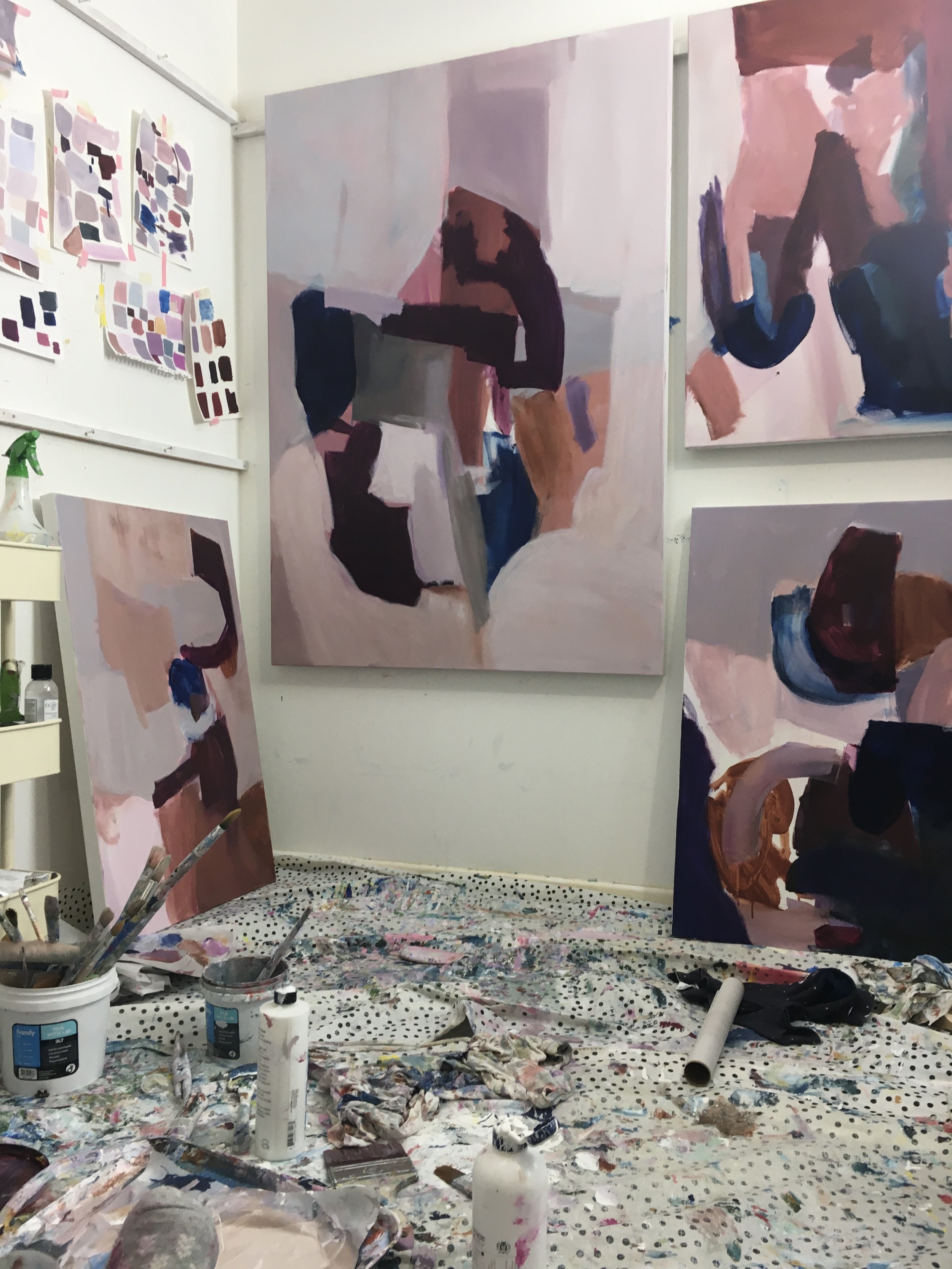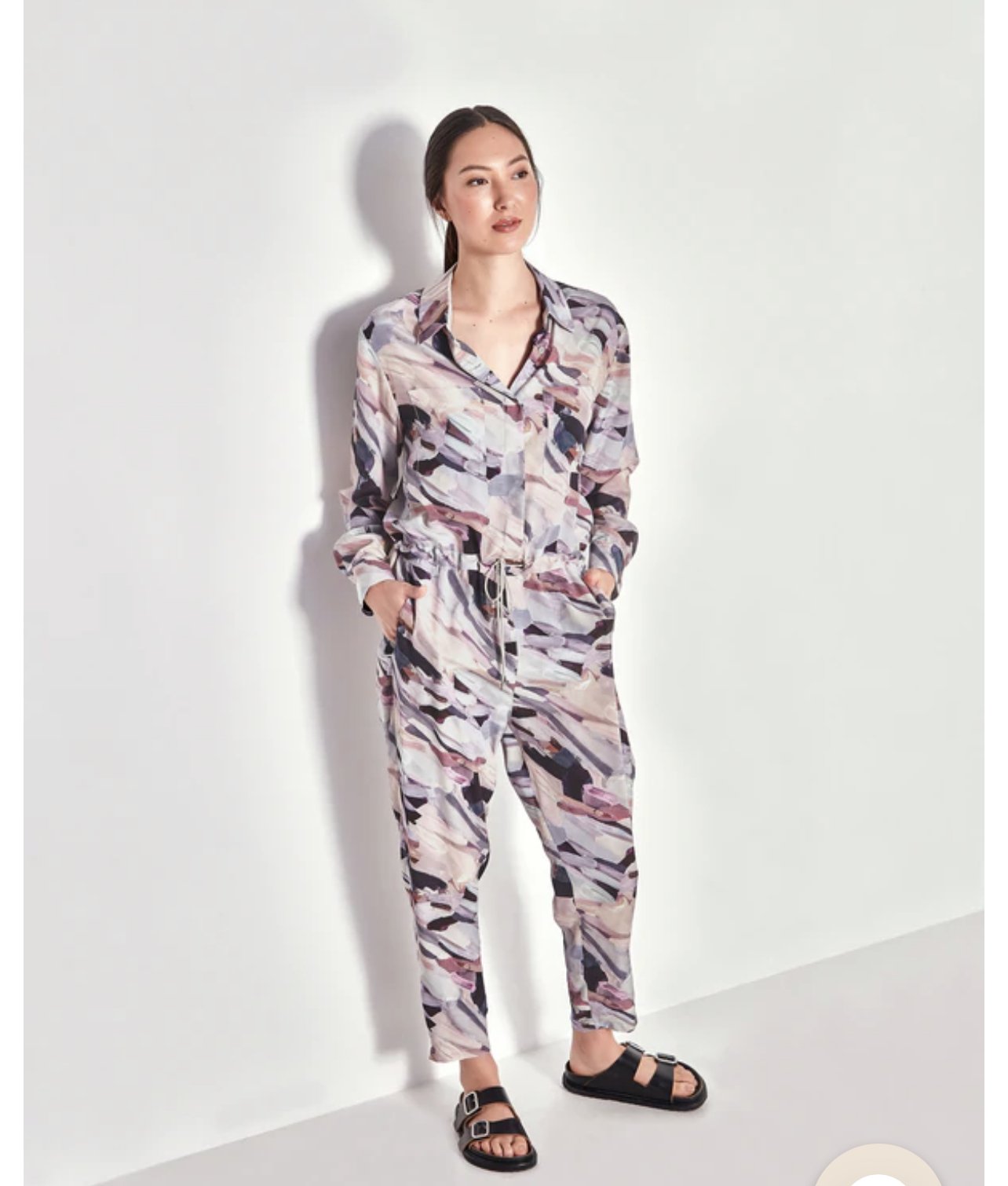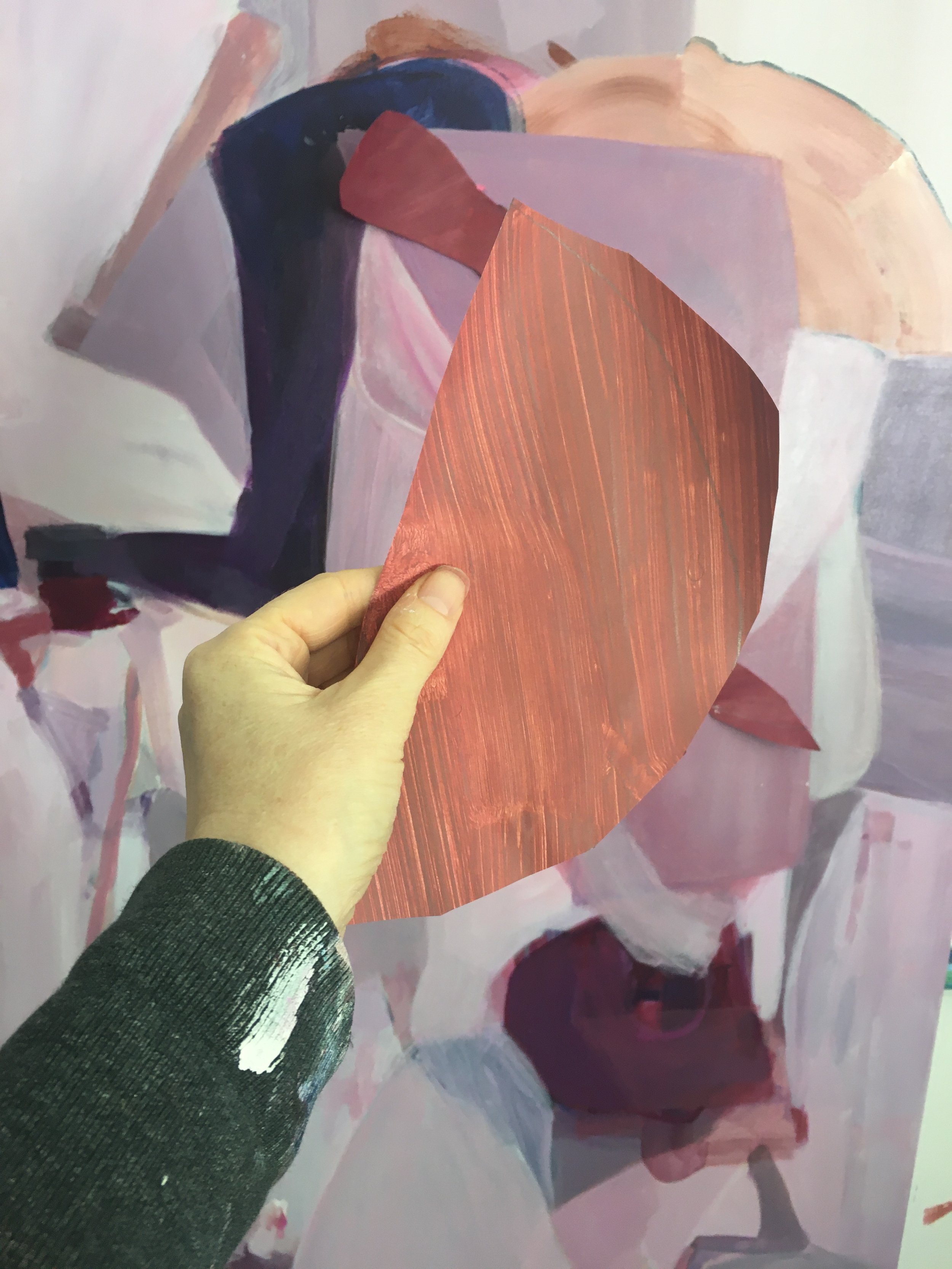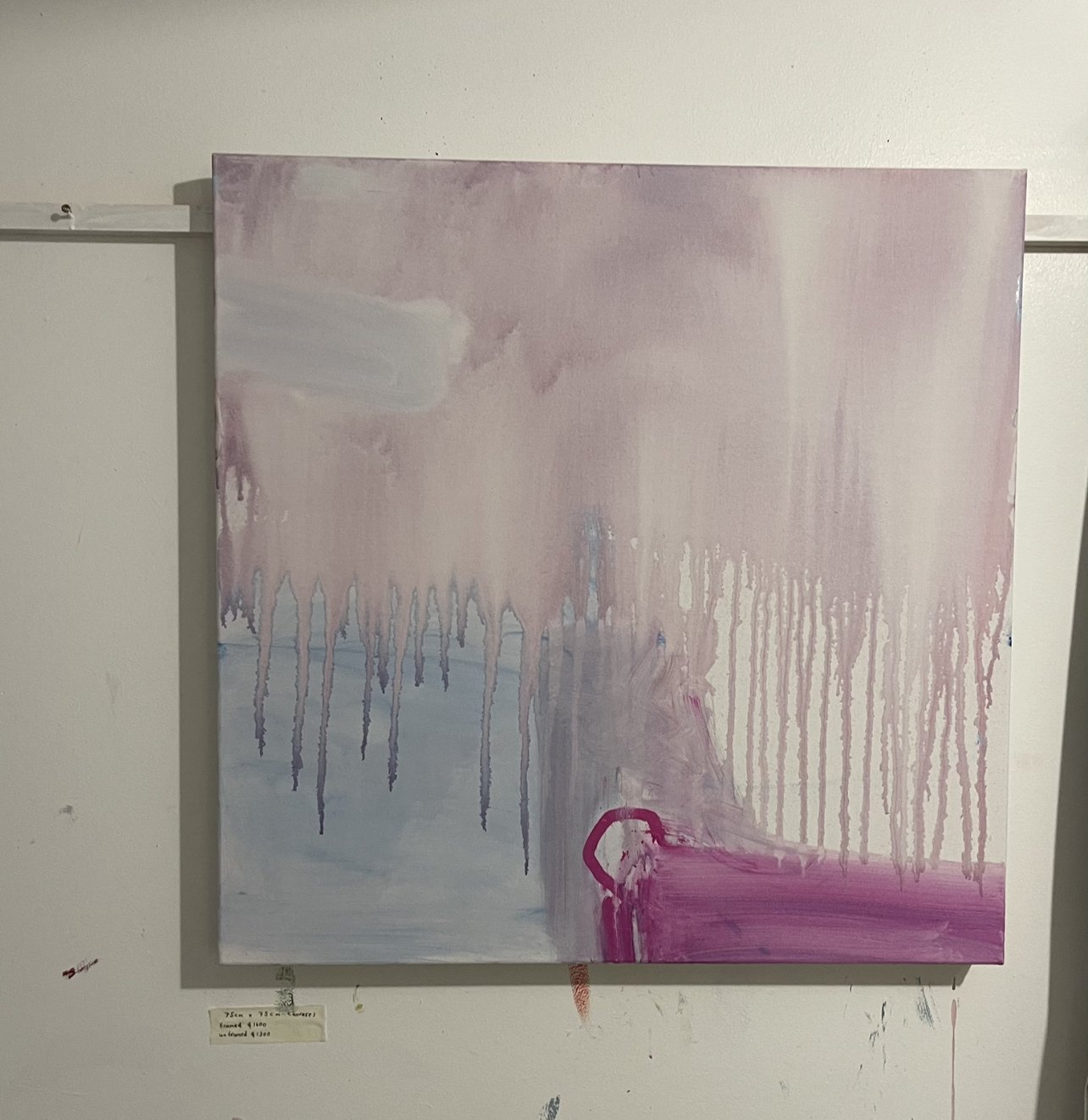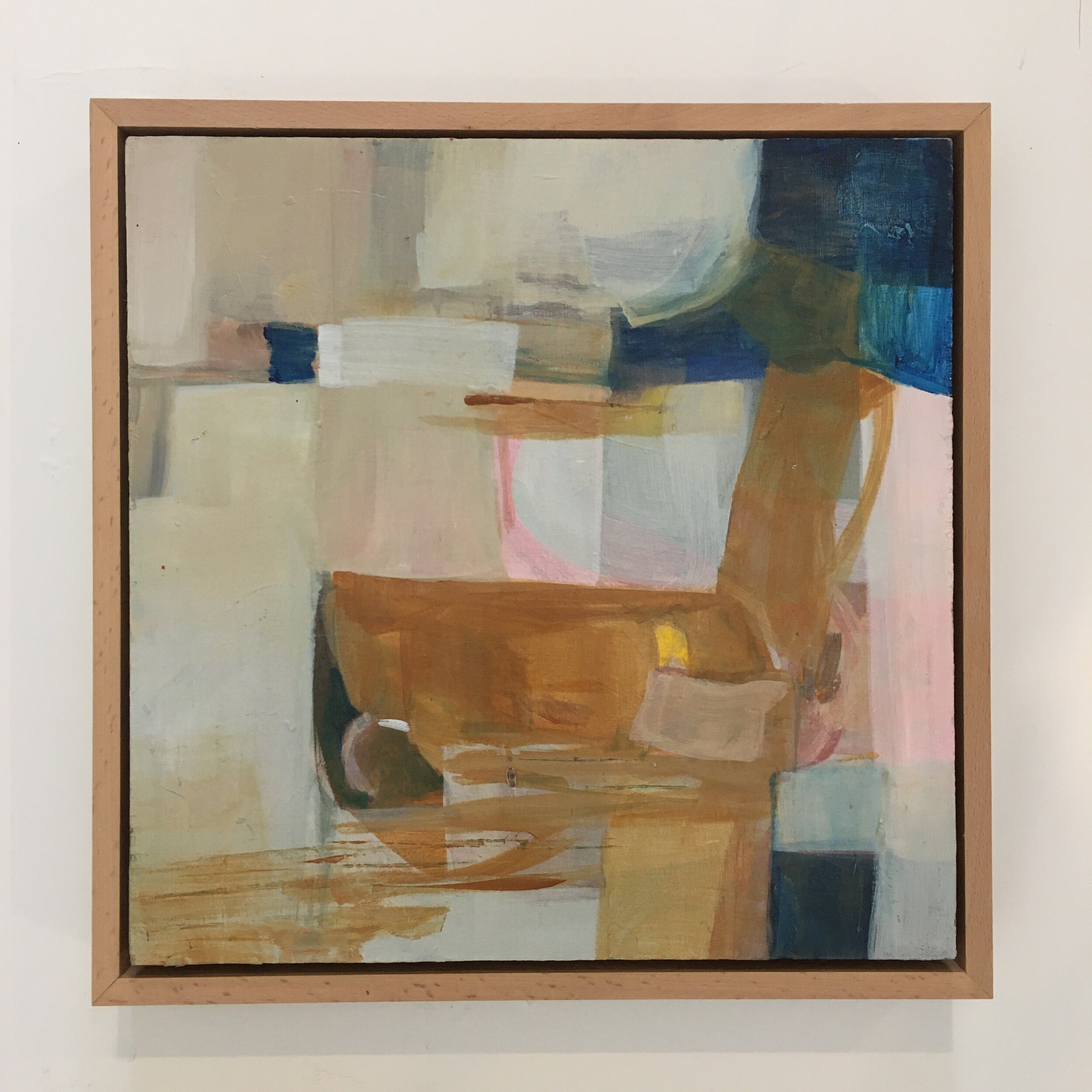7 ideas to help you start creating again
I’ve got into a few conversations lately where people tell me they want to start drawing or painting again. It’s something they used to do but they stopped and then got out of the habit and now they feel like they never have the time.
So many of us let the creative side of ourselves fall away and it can be so hard to start again. I went years thinking I didn’t need to create but now I look back there was always something missing and my life is so much more fulfilling with time creative time.
Here are seven ideas to get you creating
1 Use cheap paper and have lots of it to hand. A page of pristine quality paper can be intimidating. I started using cut up used copy paper.
2 Choose one type of materials that you have hanging around - maybe a pot of indian ink, maybe a packet of cheap watercolours or a nice pen you have. Going to the art shop, researching materials will probably lead to more procrastination.
3 Think of a project, something where you produce a number of images rather than working on one ”masterpiece’ the idea is to get back into the habit of creating.It could be to draw one flower each day, It could be to draw a 5 min landscape, you could focus on lines and each day fill a paper one day with geometric lines, the next with swooping waves and bends. When I started painting again I did messy squares of colour on very small scraps of photocopy paper. It was fun to remember which colours I liked and to see which colours worked together.
4 The important thing is to start, and add work to your pile. Try not to worry if one picture you’ve created feels like a failure, instead, try to focus on how you’ll feel when you are looking in front of you at 50 pictures. You might look at that one that didn’t work out and see something in it you can learn from.
5 Put the materials somewhere you’ll see them- dining table, coffee table so that it’s easy to just pick them up and start.
6 If it’s still hard to begin, and the blankness of the page still intimidates you. Start by using paper with an image on. Use collage. Close your eyes and do a big washy line.
7 And the last thing, to make it happen is to choose a time when you’ll be creative . Like, with your morning coffee. I’ve drawn while watching Tv, waiting for appointments, usually at the coffee table after putting my daughter to bed.
Power tool in the art studio
A new tool
This time of year is usually when I am having more studio time. It’s when I get to work on my painting without worrying about events.
My studio isn’t huge and I noticed that it felt even smaller because I had a lot of unfinished paintings on canvas stacked around that had become unusable because I’d used too many layers of acrylic paint and the surfaces were too bumpy and rough.
So for the first time I decided to use the electric sander we’d inherited from my father in law. Here I am with the canvas against the wall. I found it was a lot easier with the painting on the floor with something form placed underneath. It was noisy and hard on the hands but working in short bursts I made good progress going over all those bumps.
It was really pleased with the result apart from ruining one canvas where I cut through to the other side right at the edge. I started to be a bit more careful after that happened.
After painting with gesso I had 5 new usable canvases to create new work on. I buy good quality and not cheap canvases these days so am glad I am able to use them
The surface was so much smoother and though there isn’t the weave of the canvas it felt more like the smoothness of paper which I like. Starting with a blue and yellow background felt like the best way to start these.
Large paintings - an update
I’ve been also working on these 4 large paintings. I’ve been struggling with these for a long time. I actually started them last year and had the idea of ‘ finishing them’ which is completely the wrong way for me to approach painting. Having the idea of how the end will look when painting makes me tighten up and affects what I do.
I think they just felt a little safe like I hadn’t pushed myself.
To get somewhere interesting I know I need to try something that will risk destroying what I already have. So, headphones on, with music without lyrics ( soundtrack from tales of the loop) I mixed larger amounts of paint and tried to paint as if I was beginning and this was layer one.
After a bit of warming up it worked and brought back the kind of looseness of brushwork I want in my work . I felt the tingle in my body as I looked at the colours and marks looking so much more exciting.
I moved from one to the next painting and was in that flow state artists are always looking for .
I know that when I want to complete a painting, rather trying to work things out logically - say , by looking at the proportion of different values - what I need to do is get into the right state of mind to paint without that part of my brain . Because, all that stuff, all those rules they’re in there and I know instinctively what’s going to work if I don’t over think every mark.
One of the great things about painting is that you learn about yourself and how you work . Even if later you forget all this and find yourself having to relearn the same thing again a year later with a kind of familiarity - Ah yeah, this is what I do.
Prints
What’s the difference between a
Limited Edition print and an Open Edition print ?
A Limited Edition print is one of a limited number made. This could be from 5 to 500 . Each print has a number that looks like a fraction , for example 5/20 which is usually written in pencil . No more reproductions will be made of the image in the future.
They are often signed by the artist to show authenticity. A limited edition print is usually more expensive because it is more exclusive or rare.
An Open Edition print means that there is no limit to how many prints can be produced. They are a more affordable option.
How to choose the right sized artwork for your space.
We hear painting needs some space around it to breathe and can look cramped if the space around it is too small . On the other hand, a small painting above a sofa or sideboard or on a huge wall can look lost and a bit awkward.
I want to help, so I’ve done a little research and have found that there are some guidelines which I can share as well as my own opinion .
How big above furniture?
If you’re hanging a painting above furniture, like a sofa, the experts recommend that the width of the artwork is around 2/3 to 3/4 of the width of the furniture. So if your sofa is 200cm wide this would be a painting measuring a minimum of 130cm. It doesn’t need to be exact but if you’re unsure this is a good guide.
If in doubt - Go Big!
Most of the guides I looked at advise going as large as you can with the artwork you select, in order to bring the room together. A piece that’s too small can look awkward hanging in all that space.
Here are two photos to test out these guidelines . I have to admit, the one on the right does have more impact , but I like the space above the sofa because generally, that’s where people’s heads are going to be.
Other walls
It’s a good idea to consider the proportions of the wall in relation to the size and proportion of the artwork .
Is it tall and narrow ? A portrait orientation should usually work better than landscape.
Again, if you’re not sure you can make the artwork cover 2/3 to 3/4 of the available space.
A Tip for getting the size right before you buy
Cut out a piece of wrapping paper or newspaper to the size of the painting and blue tac it to your wall. This should give you a better idea of how much space the painting will take up and if there's enough blank space surrounding it.
Don’t be afraid to break the rules
Don’t be afraid to break the rules though. If you find a painting that excites you and reflects your taste, hang with confidence -it’s probably going to fit right in among the other things you have chosen in your room.
Living room with square painting above it
I think an artwork off centre like this can give an interesting look and I find that square paintings seem to fit in everywhere, so long as they have some space around them.
If you are lucky enough to see a painting that you can’t stop thinking about then that’s a clue you should buy it and find a place for it later. You don’t even need to have it in one particular place, nothing like moving around the artworks when you feel like you need a change.
An original artwork is something that will last longer than a lifetime and will go along with you on any future house moves.
Square painting above a sofa with cushions
11 questions about my art practice last year
Some questions to ask at the end of the year, looking back at what’s worked and what hasn’t. These can be used to journal about and take a little time to think over before rushing onto the next new thing , which is often my instinct.
Read MoreExhibition at Turua Gallery
This was the first opportunity I have had to exhibit so much work together in one space and I have to admit I wasn’t sure how this was going to work. How would I get the timing right ? Would I get them finished in time for the framing ? How am I going to work on so many large pieces when I only have a studio space that allows me to work on 3 large at once ?
This was a joint show at Turua Gallery with sculptor, John Allen
I didn’t know John but Liss at Turua suggested we do a joint show as our work had often been paired well together and we seemed to have parallels in how we approach our work. After chatting to John I found out that like me, he doesn’t have a plan of the finished artwork in mind and that it instead comes into being through process.
My process
The date for the show was set for the end of July. I began working on paintings for the show back in February and for the first time developed a timetable, a working plan . I decided to work in groups of a certain size for 2 weeks then, though they weren’t finished I would move onto the next group for the following 2 weeks.
I did this, writing it all down in my notebook . I drew the shapes of the different canvases I’d ordered and gave each a number .
As I worked on the three sets in rotation I noticed that one painting would be far stronger than the others but this would change. I usually began my day’s painting by starting on the least advanced painting , because it was here that I could take risks and make big changes. While doing this I would sometimes make discoveries about how to use the paint or a tool in a certain way that I could try out in another painting.
Though I worked on a set of 6 over the two weeks I wouldn’t paint on more than one at the same time .
I wanted to give each painting my full attention and for it to develop through a unique process.
As I began a new set of canvases this idea of each painting developing in its own unique way became more important to me and so I intentionally began each one in disparate ways. Some I would begin by colour blocking in saturated brights , Some by dry brushing light over dark, by applying with huge gestural marks, by scrubbing with cloth. I wanted each painting to have its own story.
Finishing
As I worked steadily on these paintings, certain ones would suddenly leap forward and I’d see they were finished . I put them to one side and at times would view them out of the messy studio to make sure I was satisfied.
Every painting for the show had to be professionally framed and because I was ordering so many I got them delivered to the house. I still remember first seeing them and the excitement that they’d suddenly they became like objects separate from myself.
For the first time , all the paintings were professionally photographed and I went along with my paintings for a few hours . I saw each painting get set up and be photographed and was amazed at the care and attention to detail which was given to making sure that the colours in the artwork matched exactly what was on the screen.
The show
The day before the opening I found out that paintings had sold in the preview which was exciting because I could walk into the show and see red dots on the walls which made me less nervous about the opening evening.
In the end I had 16 large paintings on the walls . Seeing the paintings that I’d been working away on for months in my studio up on a clean gallery wall , framed, with good lighting was an amazing feeling. I could view them with more distance and as I walked around the gallery I was pleased that they looked like they were produced together but I also had a range which was my intention.
There were paintings with fast bright energetic colour and then softer, lighter more calming ones , kind of like how musicians create variety in an album I think.
Doing this has definitely increased my confidence and given me ideas about what I want to do next.
You can see all my paintings from this show
For more photographs please take a look at the Arts Diary website
First time as a podcast guest
I’d listened to a few of the interviews on Creative matters and liked how relaxed and personal the conversations sounded so when Mandy Jackish got in touch I wanted to say yes even though I was kind of terrified. What I like about these podcasts is how it feels like you’re listening in on a relaxed conversation between two people and they manage to go into all the details that I often want to know when I read the polished artist bios. I wonder- but HOW did you know to do that? But HOW did that happen? Mandy seems to ask guests the right questions and the stories get long- perfect for when I’m painting or driving on the motorway.
I’ve always avoided situations where I’ve had to talk in front of others but lately I’m trying to push myself to do things that feel out of my comfort zone. I was also hoping that if I try to tell some of my story I might learn something about myself as it’s not often you get the chance to just talk about yourself and your art journey.
Because I live in Auckland I was able to go to Mandy’s home to record the podcast face to face. She lives out at the wild beach community of Muriwai which I’ve always loved visiting .Mandy was so welcoming and has a lovely home with a stunning view looking down on the beach.
After we sat down at the table, set up very professionally with the microphones and computer we had a little practice- I realised it’s really hard for me to keep my head in the right position and each time I got carried away talking I moved away from the microphone so we had to stop and start a couple of times until I got used to it. Everyone dislikes the sound of their own voice don’t they.
We recorded the conversation and when it finished I felt like I was running on nerves, which makes me speak to quickly, not pausing to think so I didn’t want to listen to it. Driving home I got that feeling where I wished I could come across in a calm and considered way. A careful , thoughtful person who thinks before she speaks and chooses words carefully, unafraid of silences. I get this feeling after social situations where I’ve felt nervous and perhaps revealed too much. A friend called it a vulnerability hangover and I remember reading about that before- yep it was Brene Brown
Brené Brown describes vulnerability as "uncertainty, risk, and emotional exposure." It's that unstable feeling we get when we step out of our comfort zone or do something that forces us to loosen control.
Since reading that I find I get it when creating too- after making paintings that are so full of everything I like - all the colours, shapes , textures- I get a feeling it would be safer to be more retrained, choose a minimal palette and have a plan to execute rather than creating from my messy chaotic place.
Listen to podcast here
Or search where you listen to your podcasts
Words by: Leanne Moore. Photography by: Babiche Martens for Your home & Garden Magazine
Your home and Garden Feature
Exciting news I was featured in Your home and Garden Magazine's May edition talking about my painting practice and how I got started . I was a bit anxious about having photographs taken beforehand and was worried my studio wouldn't be magazine worthy but the photographer and stylist/writer were so good at what they do. There are some fantastic photos of my studio and home and I'm really pleased with how it all turned out.
Here’s an excerpt:
“What influences and inspires your work?
So many things. It is often the beauty of colour combinations in everyday life. It might be a yellow bag left next to a wall casting a mauve shadow, or driving along I might see rust-coloured leaves at the side of the road and the dust-covered quarry truck in front that has neon orange reflectors. Another influence is my immediate environment, the light and shadow of the native bush. The forms appear in my paintings, though I don’t try to reproduce them. I’m also influenced by a lot of graphic art and textile design, especially hard-edged shapes and the kind of flat colour you find in screen printing. I”
If you'd like to see all the photos and read the whole interview, it's now online on their website
Words by: Leanne Moore. Photography by: Babiche Martens for Your home & Garden Magazine
Starting the big paintings - here goes
Some photos from creating set 2. These are 120 x 90cm and again I decided to begin them in different ways. Sometimes I intentially chose a colour I don’t usually use. Colour blocking areas to create a saturated underlayer. One canvas I thinned the paint down and poured on the floor. Another I used excess paint of any colour to wipe off brushes and build up a layer with a dry brush technique.
From painting to designer fashion (My collab with Juliette Hogan)
I was very excited when I was asked to to create two paintings for NZ fashion designer Juliette Hogan which would be used for a print to go on their upcoming collection.
This was the first time I had worked with a brand and so I'll share a little of how this process worked . First I was invited to go along to the workshop in Morningside to meet Juliette and the design team. When I arrived they showed me the mood board theys created featuring the season's colour palette with different images . I was pleased to see that the colours were ones that I often use in my work, such as soft pinks and neutrals with deep blues. I’ve learnt from experience that I can’t work with a palette that I don’t love. We talked about sizing and time frame and went through some of my paintings on instagram , discussing style.
The plan was to create two paintings - One 1.4 m x 1m and one 90 x 60 cm . So, I went away and created a number of small studies, which is how I usually begin a commission as i like ot be sure the client and I are on the same page before I commit to colours on a large scale. .
I was excited to begin the large painting , and enjoyed the process, though as I worked on building up the layers I couldn't help worrying about how I was going to create something that would work as a repeat pattern and couldn't get this out of my head . I was used to going off at tangents and adding any colours when I wanted.
At one point I was overthinking so much that the painting and become over fussy and complicated. I did panic for a while and this kept me awake at night but I realised this is a stage I tend to go through with every painting and I need to remember this. The extra pressure I put on myself thinking about a pattern was making this worse but I was able to get back to thinking of it purely as a painting and get back on track.
In the end , as the deadline drew close I was satisfied and pleased with how they turned out and in the end found I enjoyed the constraints of sticking with a specific colour palette. I was thrilled to have this opportunity and love how Louise at Juliette Hogan was able to create such an interesting repeat pattern from my brush marks.
The larger painting was photographed and digitally manipulated to become ‘Expression silk ‘, a hero print from the Juliette Hogan Collection 2022.ONE. It can now be found in stores around the country and online, so you might see people wearing this out and about already .
Week one
It’s the end of week one and I want to document how this has gone . It’s amazing really that I now have paintings to sort out and turn into something, when only last week there was nothing.
The diptych was a lot of fun to begin painting . I enjoyed the impact making large shapes and let myself play on a large scale with music on my headphones . The two canvases together make the painting 170 x 140cm so this is larger than I’m used to.
I put together a little video of this because I know that most of this will get covered up.
I love paintings that are sparse like this, that let bare canvas show. but I knew I can get somewhere better if I keep going.
I was thinking about the hard edged shapes and soft edged forms. I used dry brush techniques and diluted the paint with a lot of water in others. I liked small random marks where paint mixed on the canvas. I’m happier with a wider colour palette and remember how I felt bringing in the hard magenta drawn line and the purples and greens.
This is where I am now. I know from experience that I need to fill the whole canvas with colour if I’m to get the result I want in the end. Here, the bright pink you see will get covered up but it might peek through in some small areas. My focus this first week was more on the 6 square paintings.
The six
Beginning. I decided to break this down again into a pair, a three and an odd one .
The first two I began by painting loose blocks of saturated colour
The next 3, I began with large watery areas, staining the canvas and using a large brush and a cloth to move around the paint.
The last painting of the group I only allowed myself to use to wipe off excess paint from my brushes at the end of a painting session. I would work with no fixed intentions .
I chose to begin in different ways as a personal enquiry, because my work often develops by responding to what is already on the surface, i was interested to see these go off in different directions . At this point I’m staying open to where they need to go and am resisting thoughts about what a finished painting might look like.
This week I worked in the studio on a full day Tuesday, a few hours Wednesday and Thursday . Friday was meant to be studio time too but we had a car issue . But luckily I made up for this by painting a little on the Saturday. At the end of the day I took them all outside to look at.
Though at this point some are further along than others I feel satisfied with my progress this week and am looking forward to building on what I have. next week I hope to complete 4 paintings . But I have no idea which ones that will be. First, need to buy more paint.
Preparing a series of paintings
Here goes - I’m going to be creating a new body of work with an exhibition in mind and for the first time , instead of just winging it - I have a plan .
Each week I will be working on multiple canvases on groups. For the first 2 weeks I’ll work on 6 canvases plus a large diptych.. After two weeks I’ll pack them away and start on the next group for 2 weeks. After doing this for a couple of months I’ll return to them and work on them again. I’m hoping that as I work and come back to paintings I’ll be able to incorporate discoveries and there’ll be a cohesiveness coming from working on them all in this time period. I felt overwhelmed thinking of how many paintings I needed to prepare and so by dividing into groups I think it will be more manageable. I’m going to write about my progress as I go and will share some of the making with my email list. I’m feeling very excited about all the possibilities of a blank canvas .
Originals available at Endemic world
Painting life during Auckland's lockdown
Over the last few weeks I was able to do a socially distanced viewing of the painting out on my deck as well as taking paintings to homes to customers to view before buying . I've enjoyed the opportunity to get out of my house, listen to a podcast on my way to deliver a painting in person.
Open studios
Last week I was meant to be welcoming people inside as part of Waitakere Open studios , which has now been postponed until February.
I've had this event in my diary for quite a while and it was going to be my fourth year of taking part. I always enjoy getting to meet and chat with people in person and share my work, it's also a chance for people in Auckland to come over and see paintings in person that they might have seen online.
I created some mini artworks with this event in mind and they are now in my online shop.
5 things to consider when commissioning a painting
Maybe you have been looking for the perfect artwork for your home for a while but are struggling to find something the right size or maybe you have an upcoming birthday or anniversary and would like to celebrate with something special?
Commissioning an artwork can be an exciting process and you can end up with a unique painting that holds a special meaning.
Most people who commission a painting for the first time don’t know where to begin so I’d like to help and try to demystify the process .
Here are some tips to help make things a little easier
1 Do your research
The most important thing is to find the right artist. Find an artist whose work you absolutely love, visit art shows and galleries, getting an idea of what appeals to you. Start by collecting digital images of an artist’s paintings you like by making screenshots or a folder in Pinterest.
2 Consider your budget
Think about your budget and where to find artists in that range. At this stage I would note the prices their work usually sells for on their website or gallery so that you know that they are within your budget. Some artists add on 20% for custom pieces to cover the extra work involved , others keep the prices the same .
Contact the artist or their gallery and enquire whether they do commissions - some may be preparing for an exhibition or be at a very busy time of the year. Some artists have a schedule where they take on a limited number of commissions per year.
Most artists will want to have an initial chat to learn more about what you want. This may take place in your home or even by video chat, phone or email. Communication at this stage is so important to avoid problems later on. .
3 Think about what you are looking for in terms of size, style, colours.
It’s important that you and the artist understand each other . You might want the painting to have a certain feeling, but words like “ bold, energetic, calming” can be open to interpretation so it’s a good idea to have visual references. Maybe collect screenshots of particular paintings that you like to illustrate what you are after- this will give the artist an idea of your taste.
After a discussion the artist would usually send a quote and timeframe for the artwork .
Timing could be anywhere from 3 weeks to 6 months and longer .
4 Remember to ask questions before you start
What if you aren’t happy with the end result? Will the artist arrange the delivery? Do you want it framed?
5 How much input do you expect?
While you don’t want to impede the artist’s creative process, some artists will be happy to show you images of the artwork as it’s being painted
Some artists allow input as the painting gets near completion and are happy to remove a certain area or add a different colour. Others don’t allow this and will work until they are satisfied with the painting.
Once you decide to go ahead the artist usually asks for a part payment to be made this could be 30% - 50 %. This helps the artist to buy materials - remember custom canvases and artist quality paints can cost 100’s of dollars.
The thing about commissioning an artwork rather than buying a completed piece is that you don’t know what it’s going to look like , this can feel quite risky.
But if you find the right artist and you communicate well and have everything clear beforehand you can end up enjoying the experience .
A commissioned painting can feel so special as you know the artist and have learnt more about how it was created and the end result can feel more personal and meaningful.
See my commissions page here
Thoughts on yellow
Yellow has been appearing in my paintings. It started with just a small patch of colour on a blue painting and then started to appear in more, I don’t know exactly why I’m drawn to cadmium yellow. It’s a colour that isn’t found in dark moody places and can make a work sing if next to the right muted shade. It has the power to lift everything around it and make things feel alive.
I don’t own any yellow items of clothing right now but remember first getting excited about this colour when I was about 13 . I remember overhearing an adult say that yellow was going to be everywhere the following year . I thought I’d had this insider information about the fashion industry and liked the idea of being ahead of the curve .
I started to see it creep in ,spotted it a little in magazines , then someone on Tv, probably in London . It’s coming it’s coming , I need to get my hands on some . It seemed so bright and so modern - unlike this grey nowhere town I was living in. I remember waiting for it to filter down from the places of fashion and reach the market stalls where my mum bought my clothes from. I got her to buy the first bright yellow too that came in even though it had a weird fit and and had a kind of jersey stand up collar that felt scratchy . It did nothing for my pale freckly completion but that wasn’t the point. I owned the yellow and it made me feel something , like a connection to something bigger and brighter out there.
.
I’ve only recently come back to yellow. Buying this year’s Leuchtturm planner in sunshine yellow brings back those same feelings and using it gives me so much more pleasure than if I’d played safe and bought a safe black , planner .
Do artists need to produce paintings as part of a series?
At the beginning of the year I thought about how I wanted to create work for 2021 and decided that instead of working in a series, as I have the last few years I would work on paintings individually or in pairs.
I thought that it would take some off the pressure off, not needing the paintings to work together as a whole. I questioned why I was always forcing myself to complete a series when I don't have a solo show to prepare for . It was impossible to see the whole group at the same time because of the size of my studio.
So that's how I started.
My plan was to make a painting available for sale whenever it was finished.
I've been able to let myself explore different sides to my painting, sometimes I've allowed myself to use free gestural brushwork and discover beauty in paint colours interacting , and others I've worked more deliberately . building up in thin washes of acrylic glazing to create a very different effect.
Even though each painting went off on its own direction, because I worked on them simultaneously the paintings started influencing each other .
While I have sold a few paintings to online followers who approached me direct to buy , here I am in June uploading what looks like a series of paintings. I wonder if others can see similarities or links between the different paintings even when I don't try.
Let's talk about pricing
I know the hours I spend working on my paintings , the time planning researching and refining , as well as the price of brushes and artist grade paint.
But still, I find it hard to feel completely comfortable with pricing - I imagine the voice of someone out there saying “ It’s not worth that!” but really, so what? Not everyone cares that a piece of art for their home is original and unique.
I’m not trying to please everybody. Just the people who feel a connection to my paintings, whether the colour, the shapes or something that makes them feel that excitement you can get from art .
So, I try to be clear these days , I want my pricing to be transparent, to make it easier for people , so I have prices under paintings on my website.
.
I know from buying art myself that if I have to ask the price, I don’t usually bother and imagine that it’s so expensive I can’t possibly afford it.
Using colour in my paintings
Here's a video where I'm talking about my use of colour and the preparations I made. There are certain colours I'm often drawn to and I started to think more about why and paid more attention to how I used colour combinations in my work.












